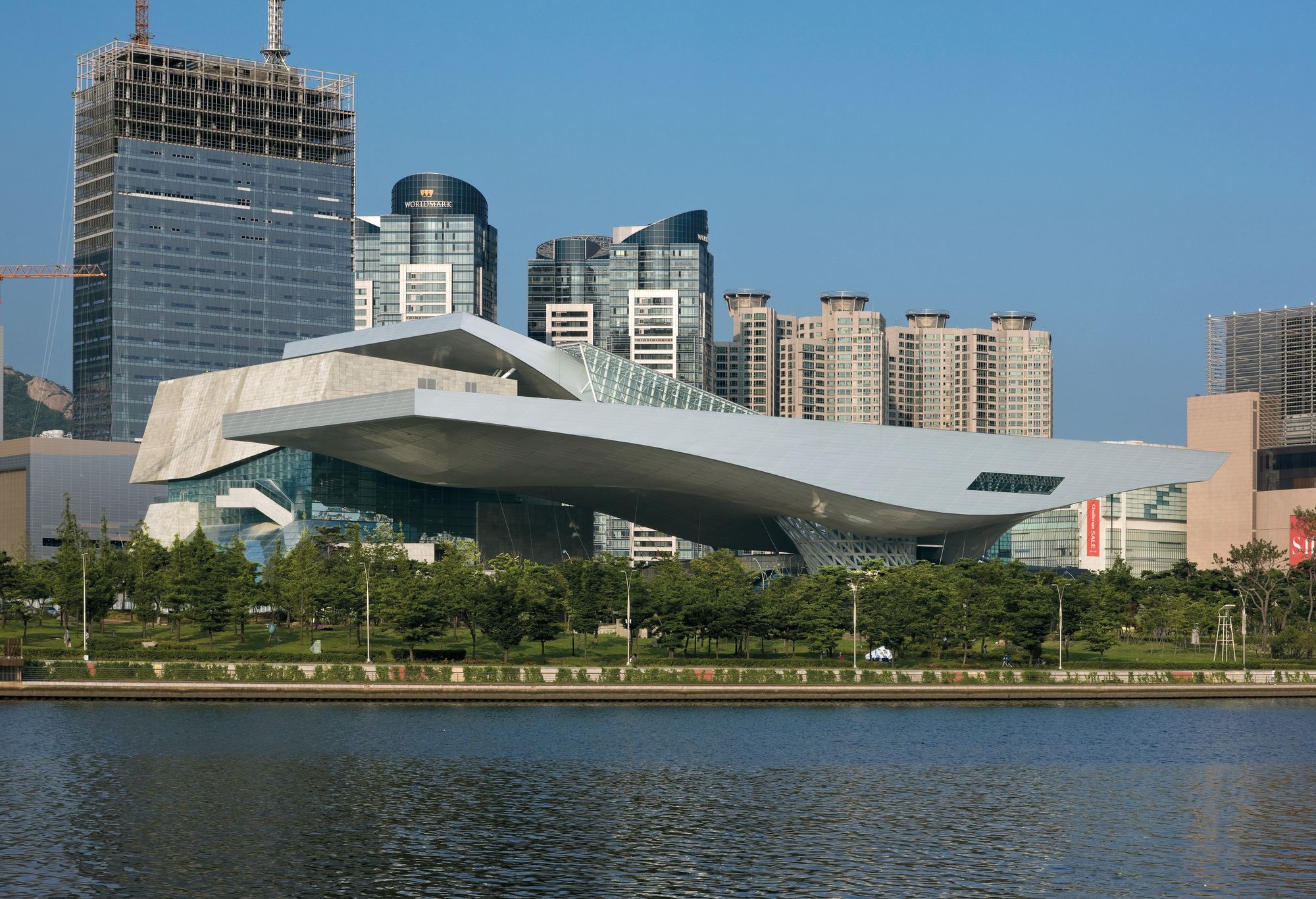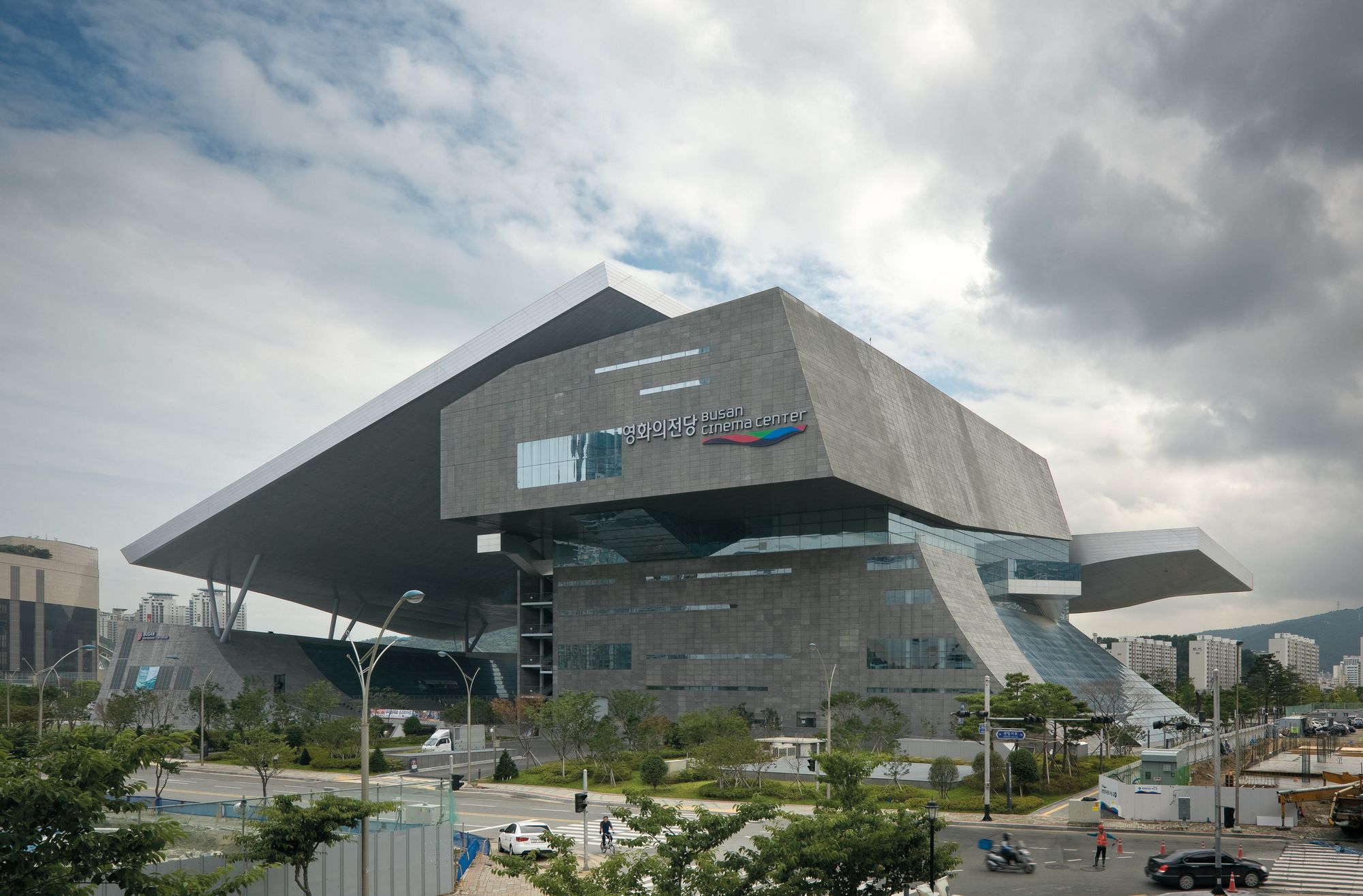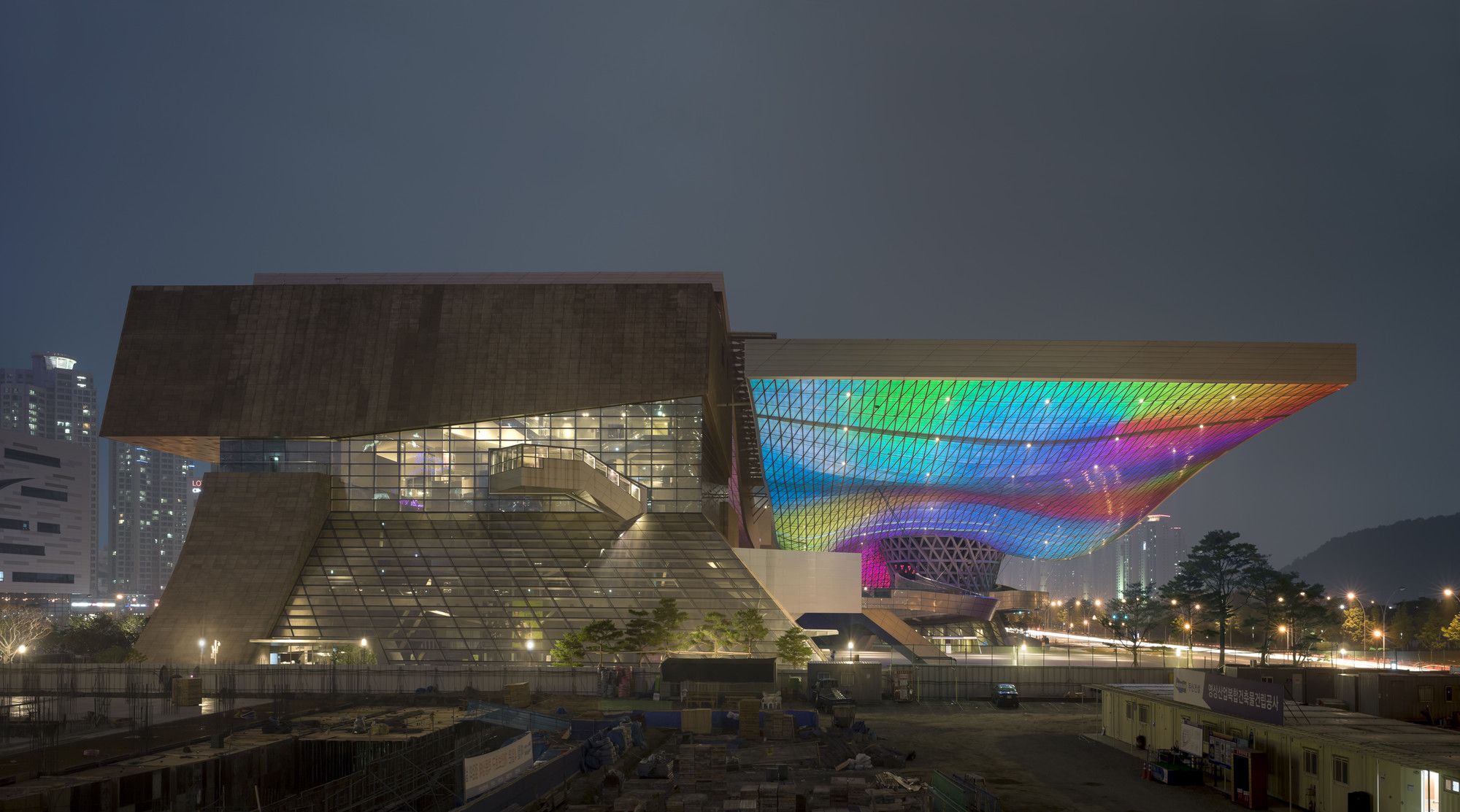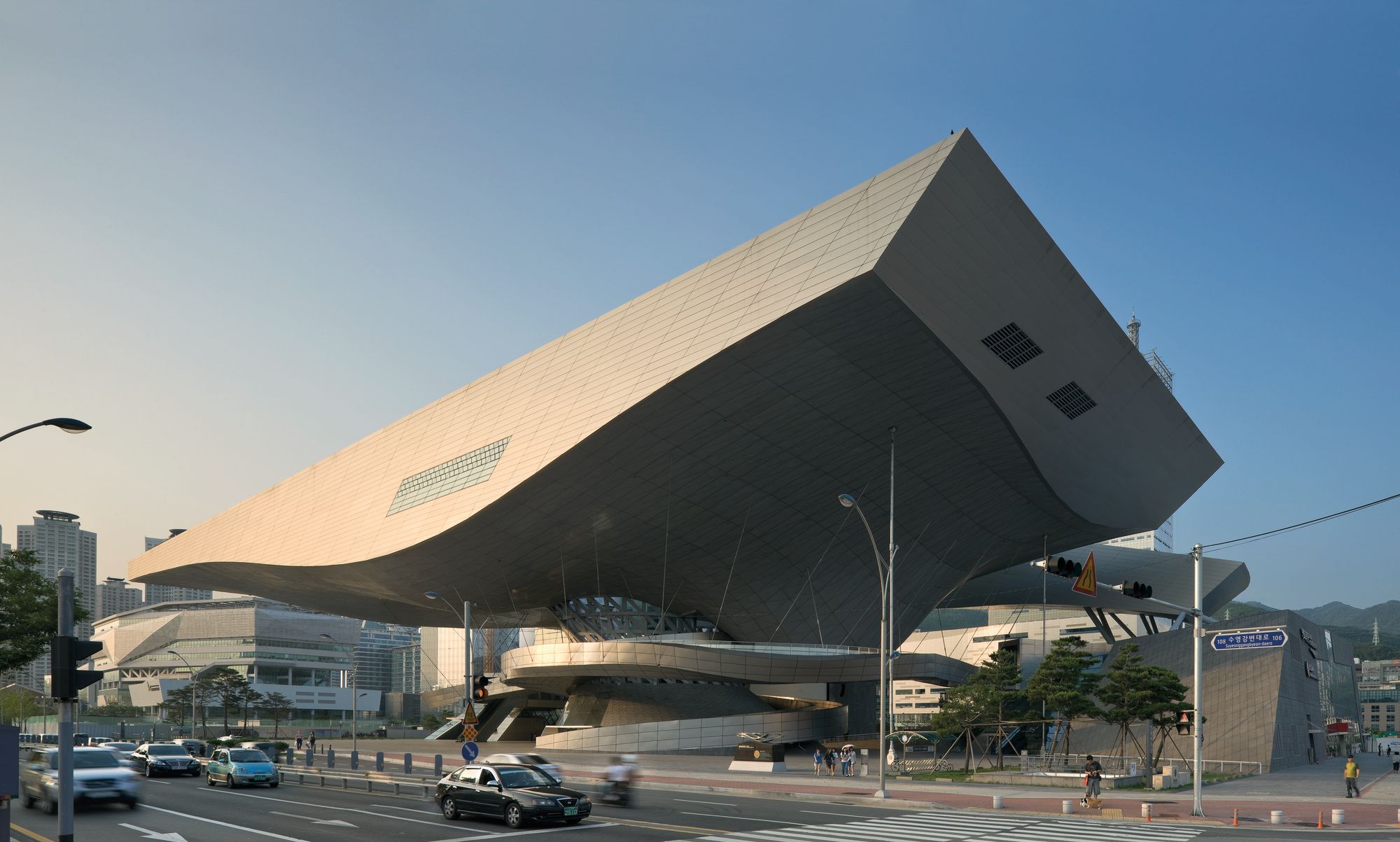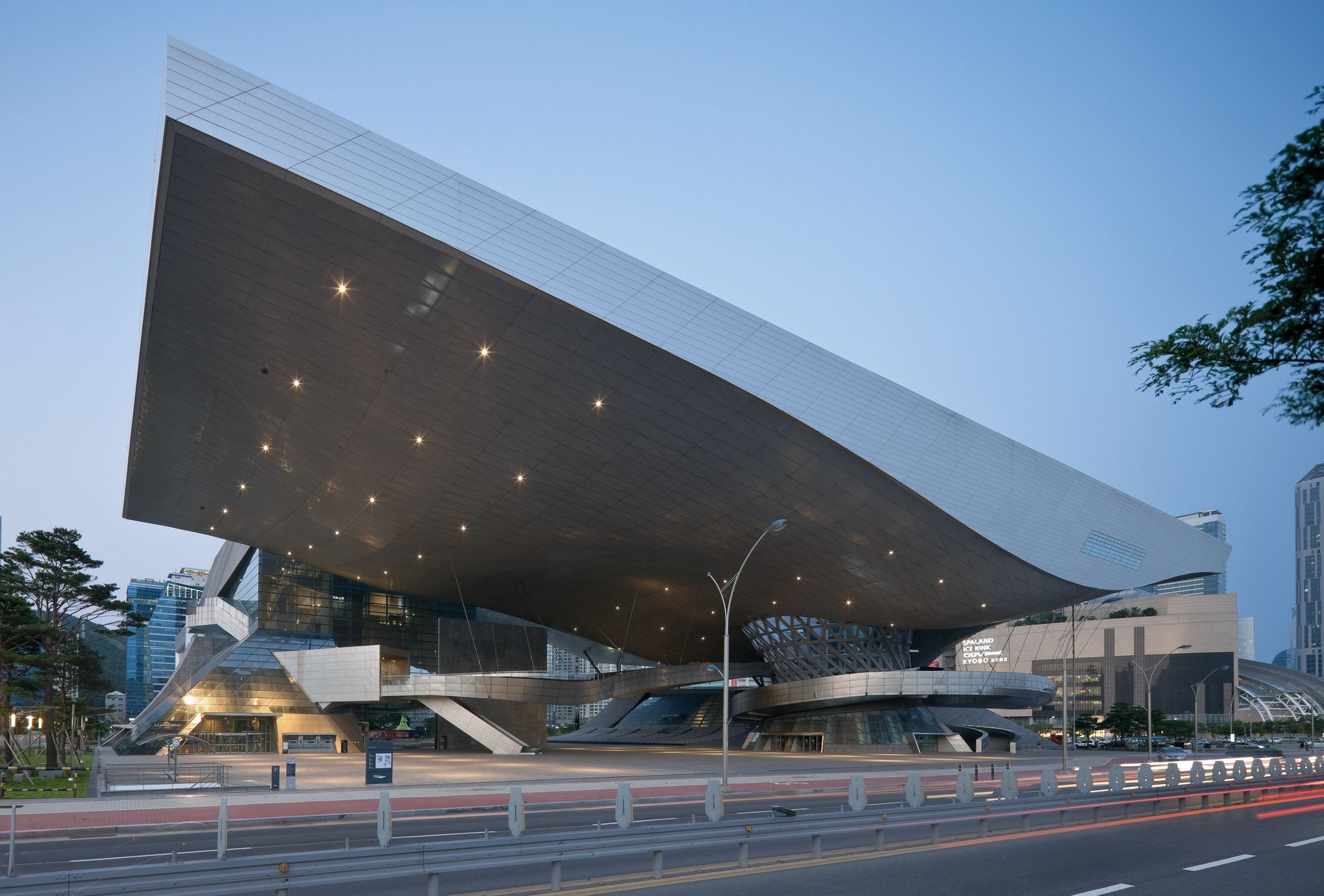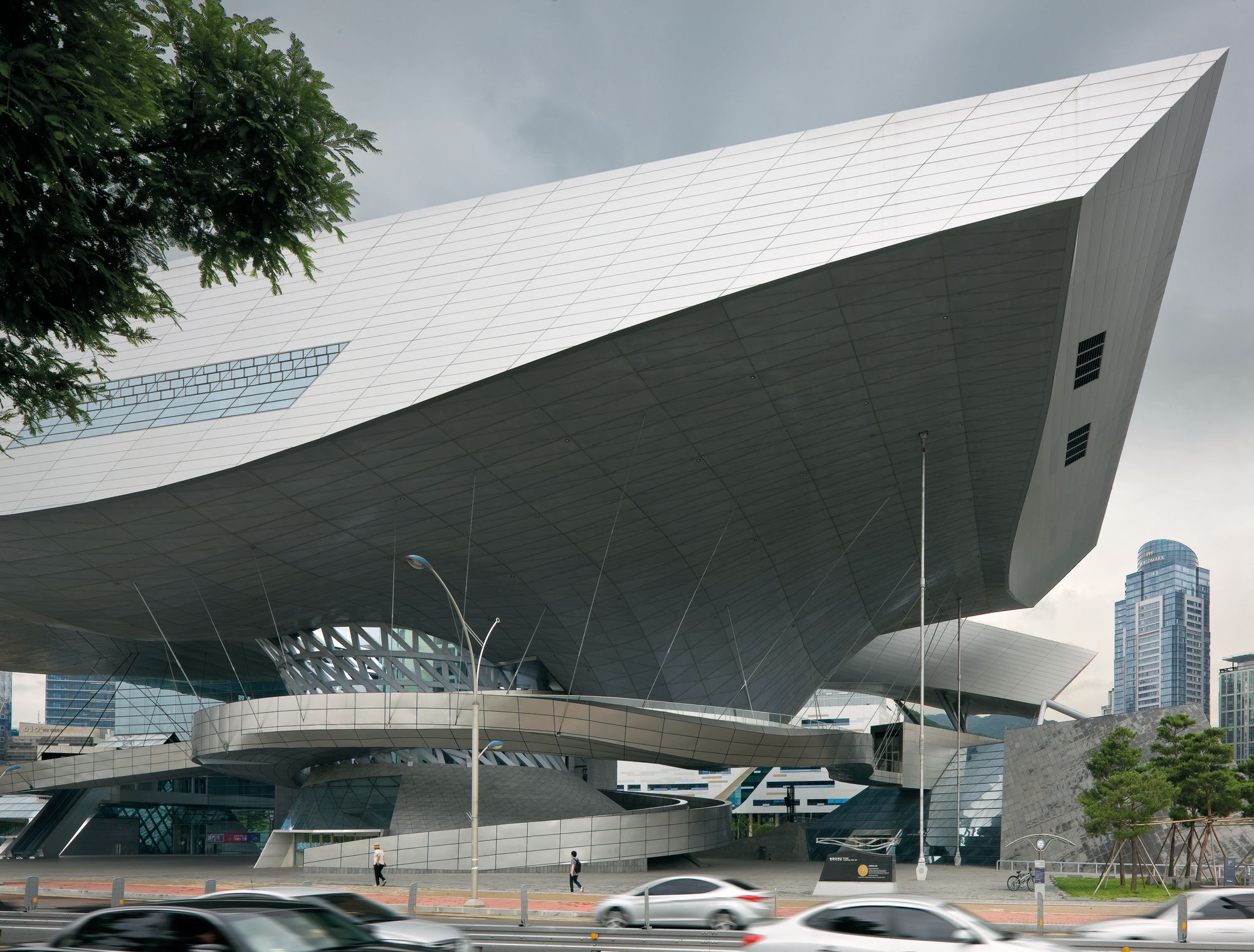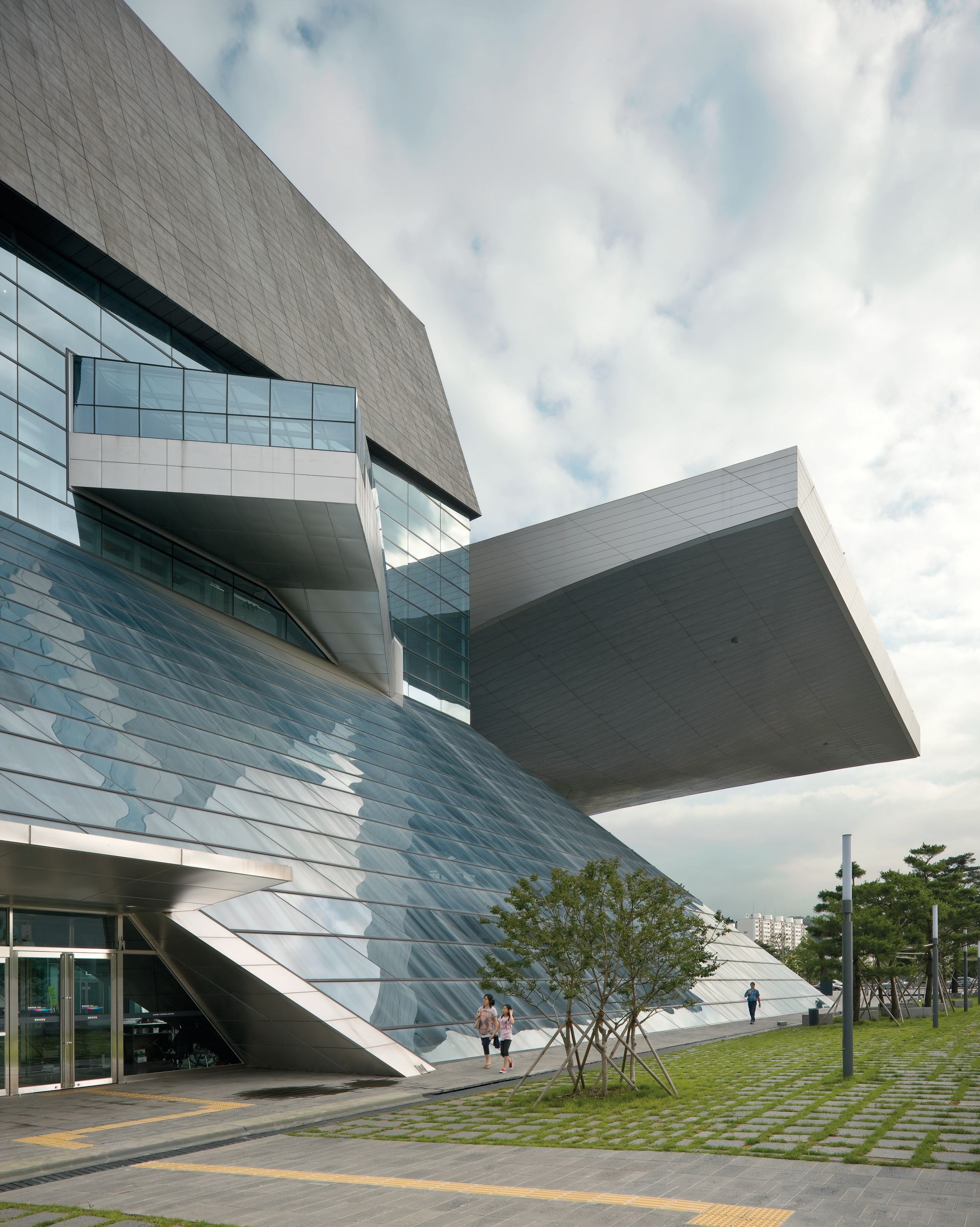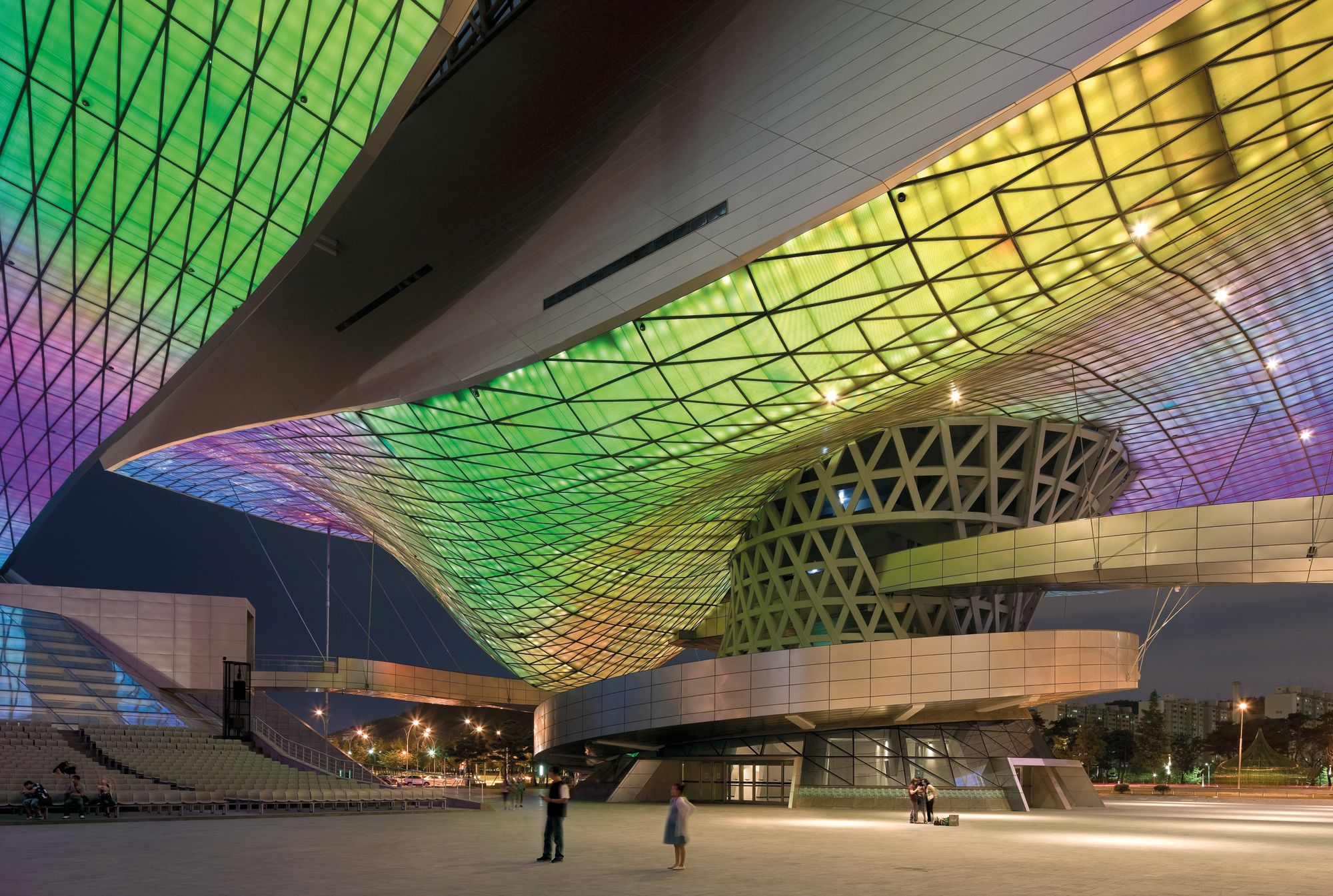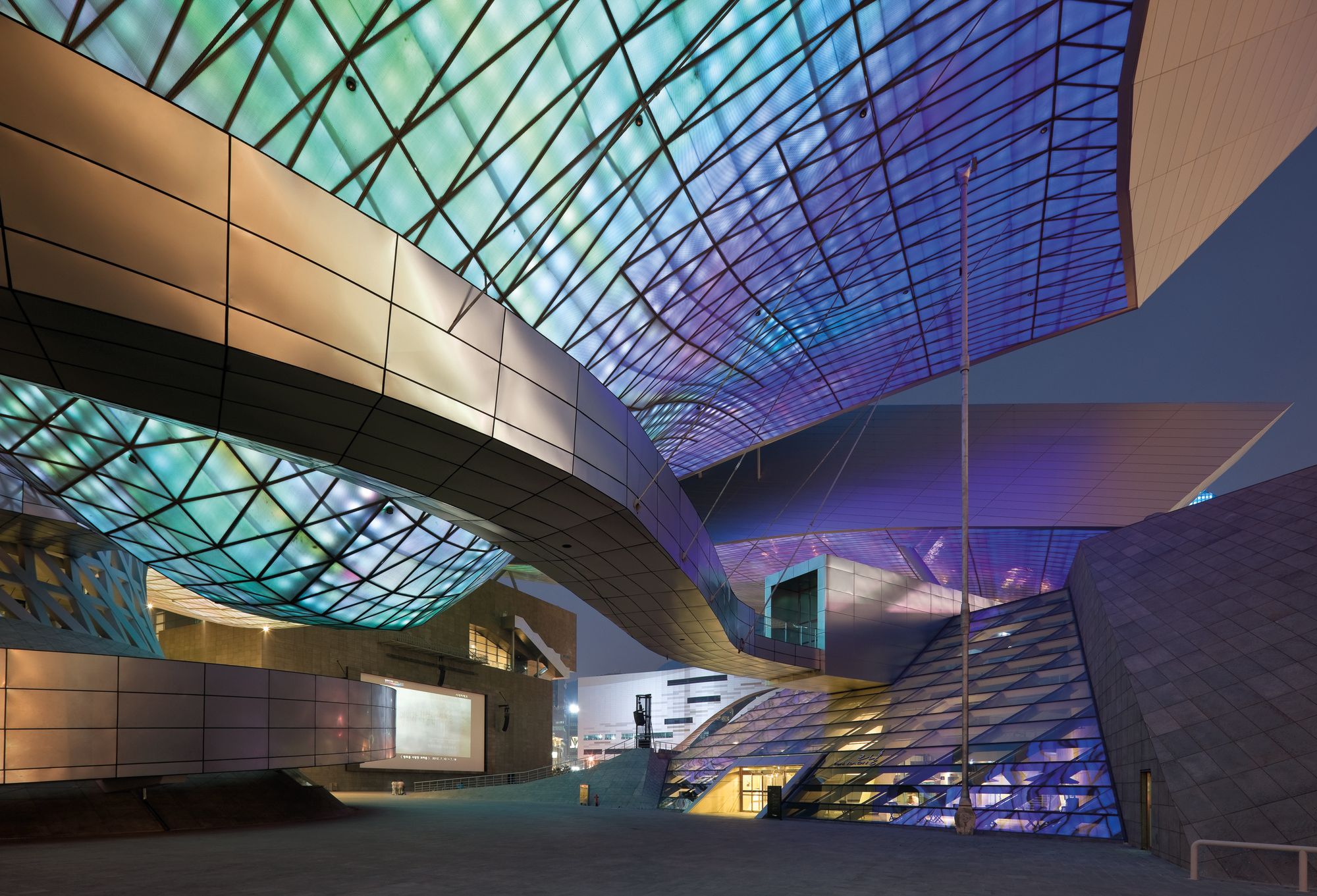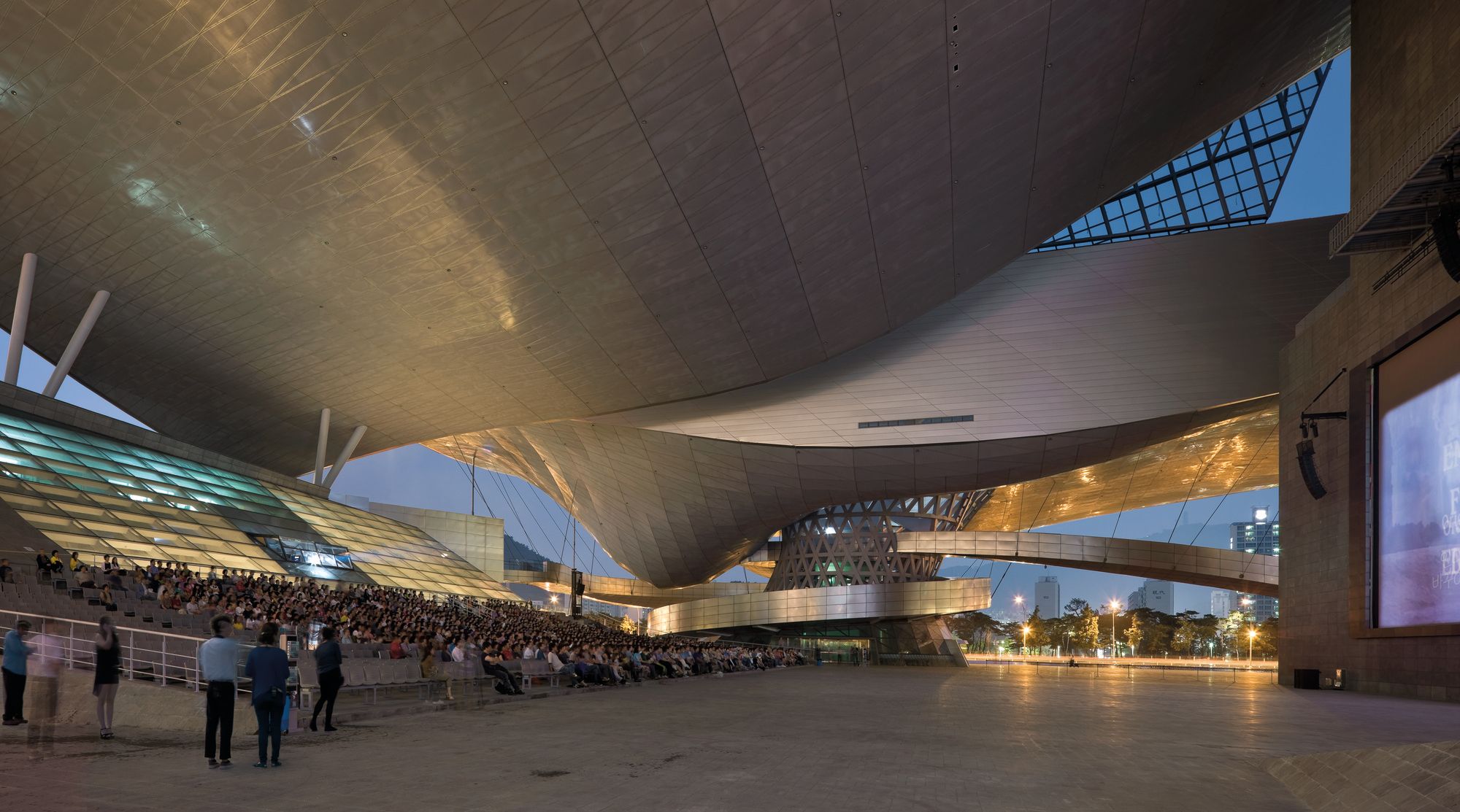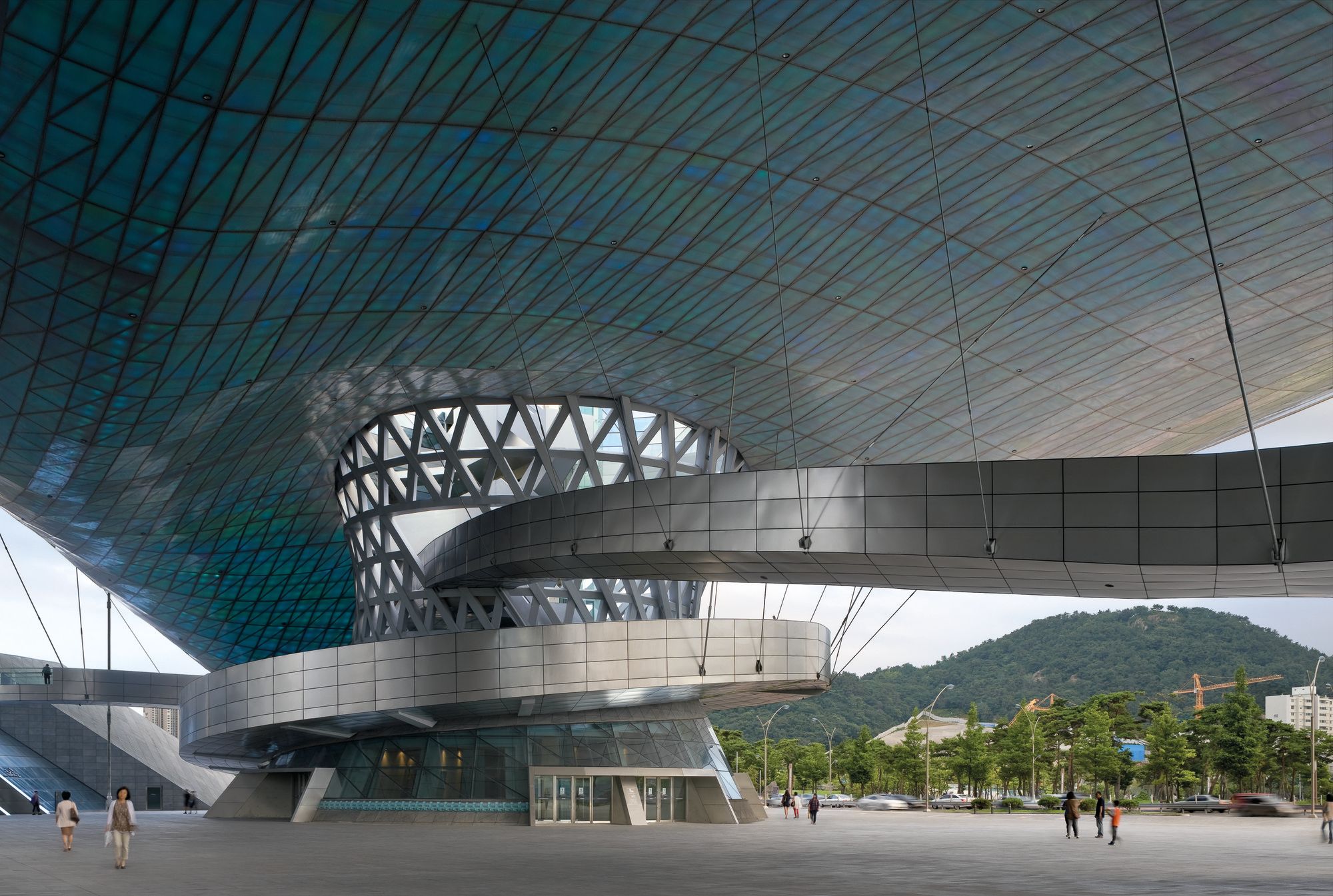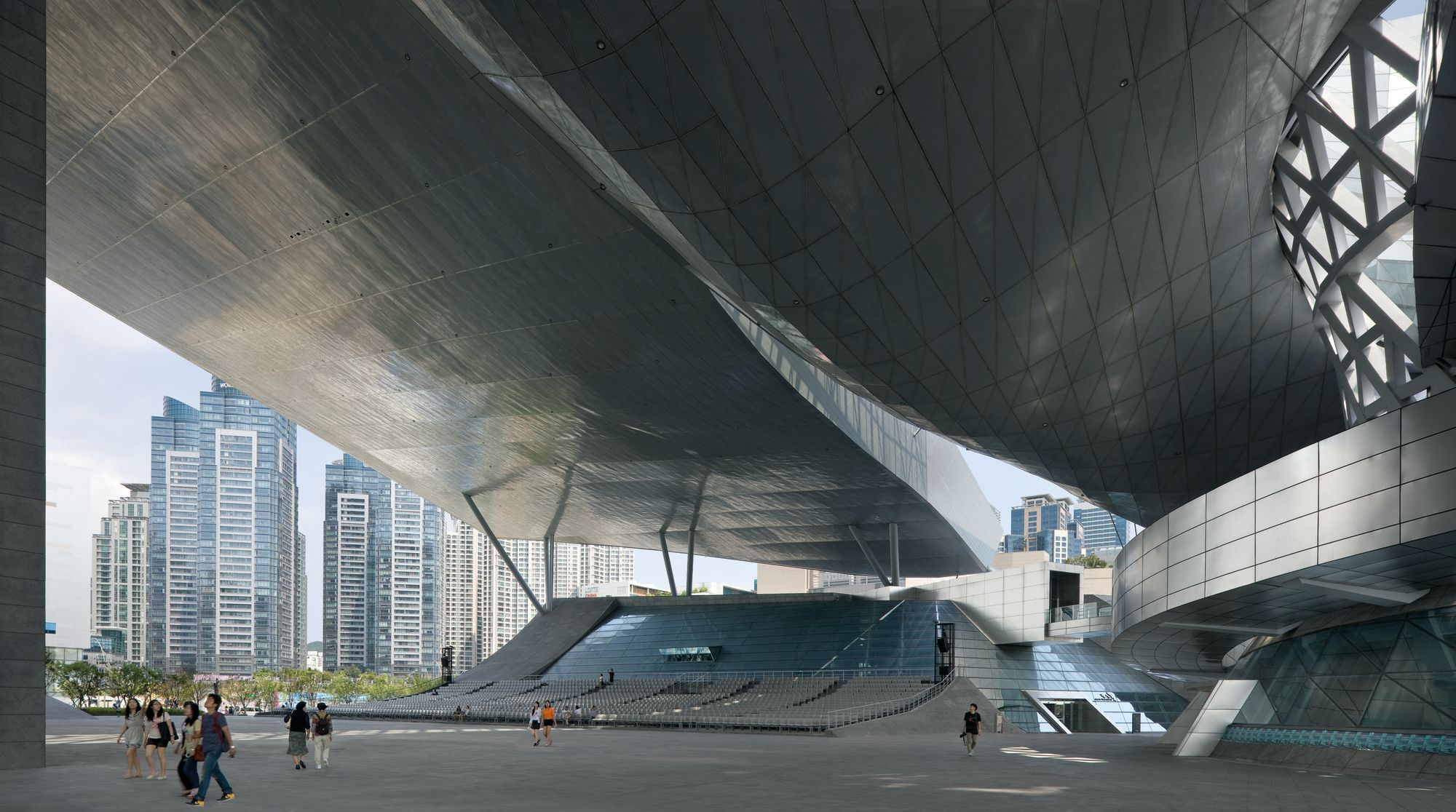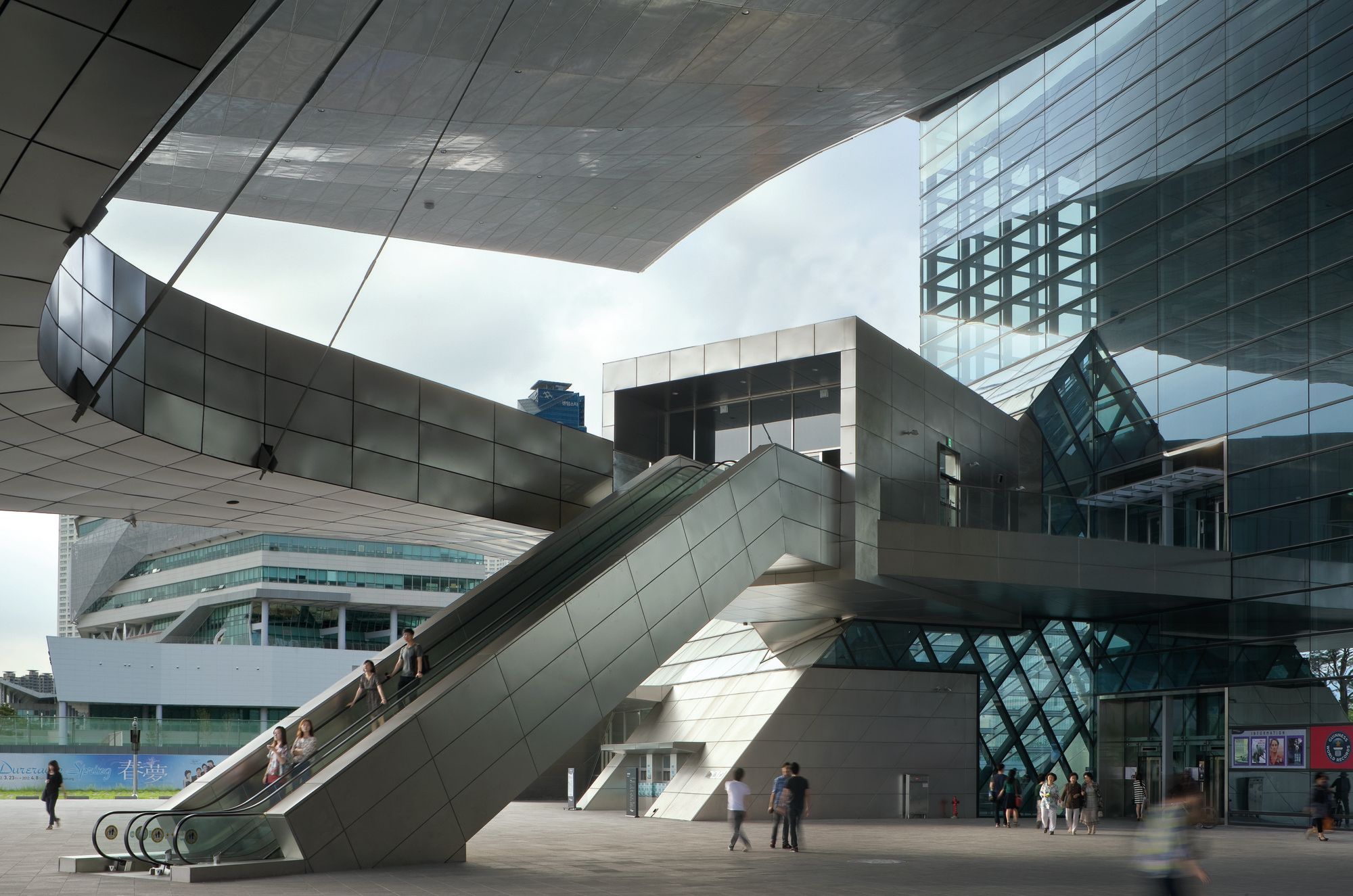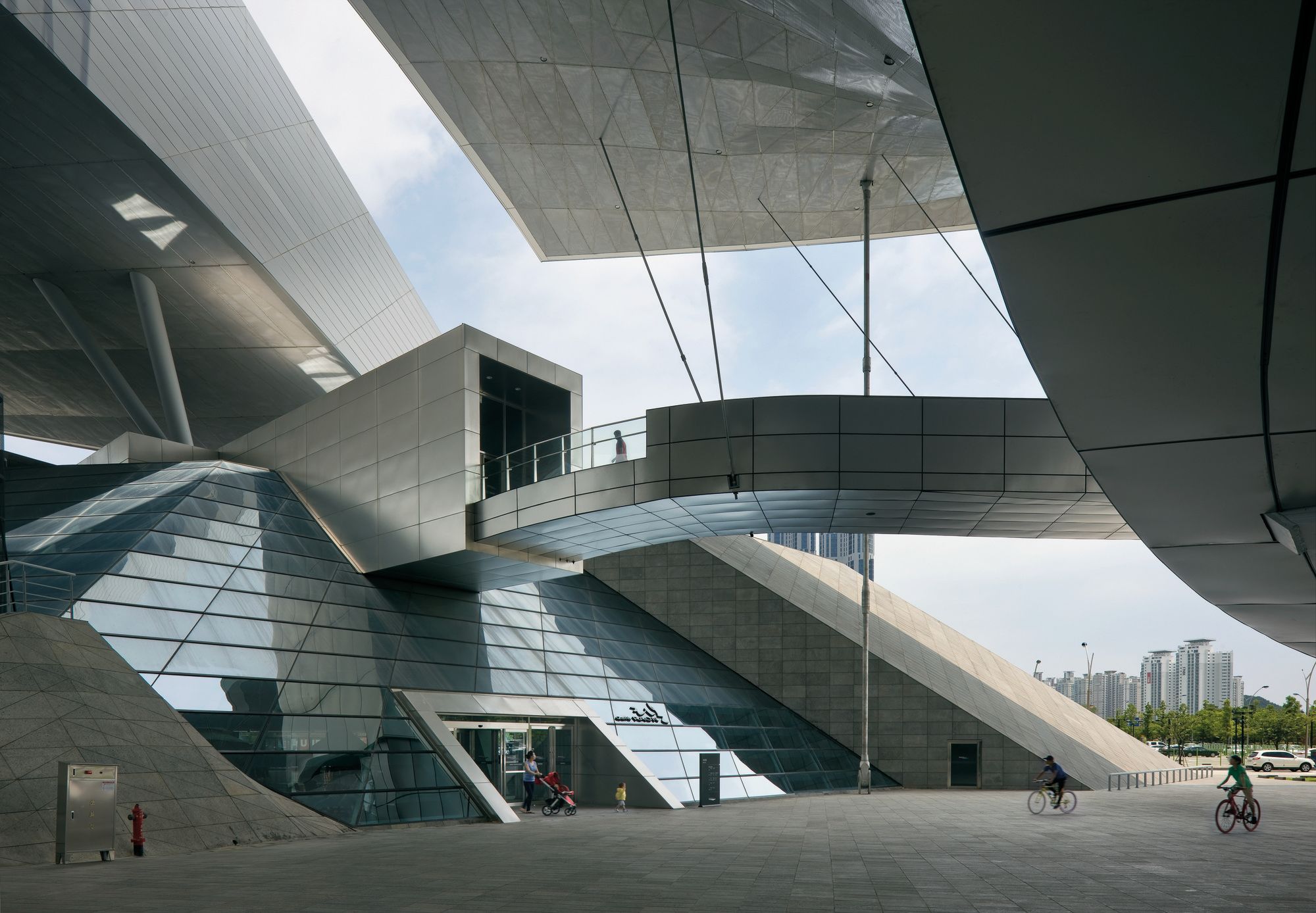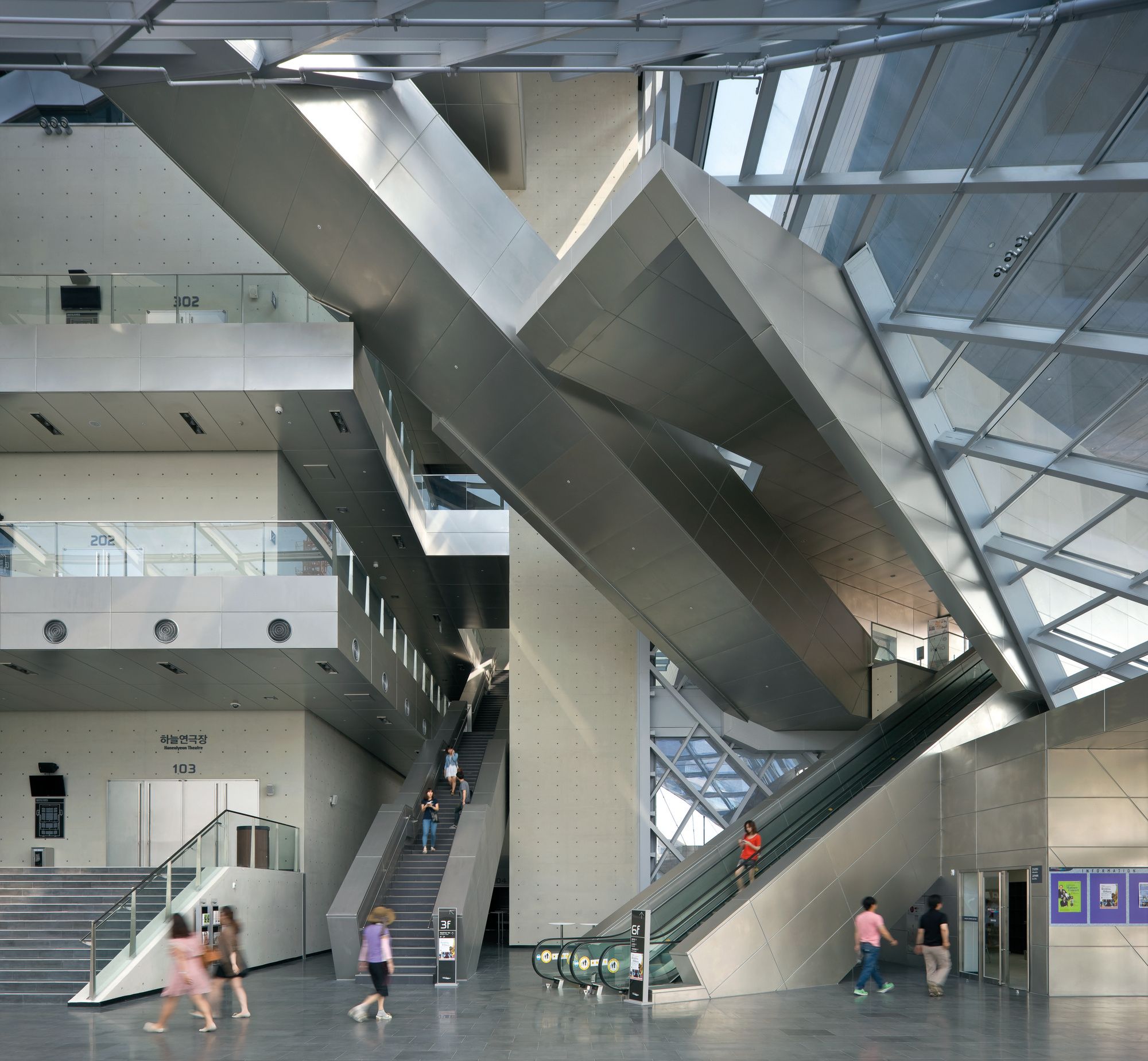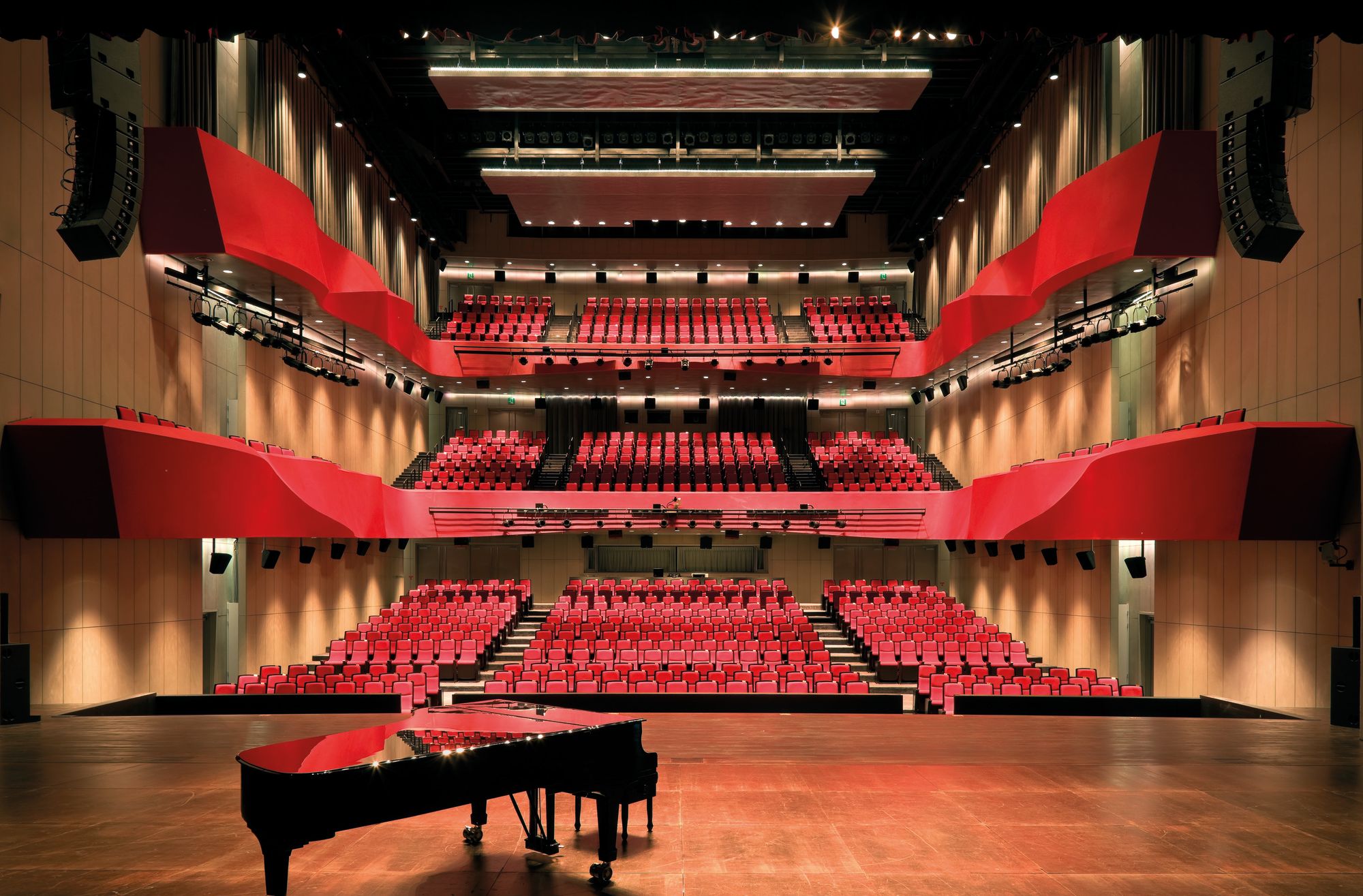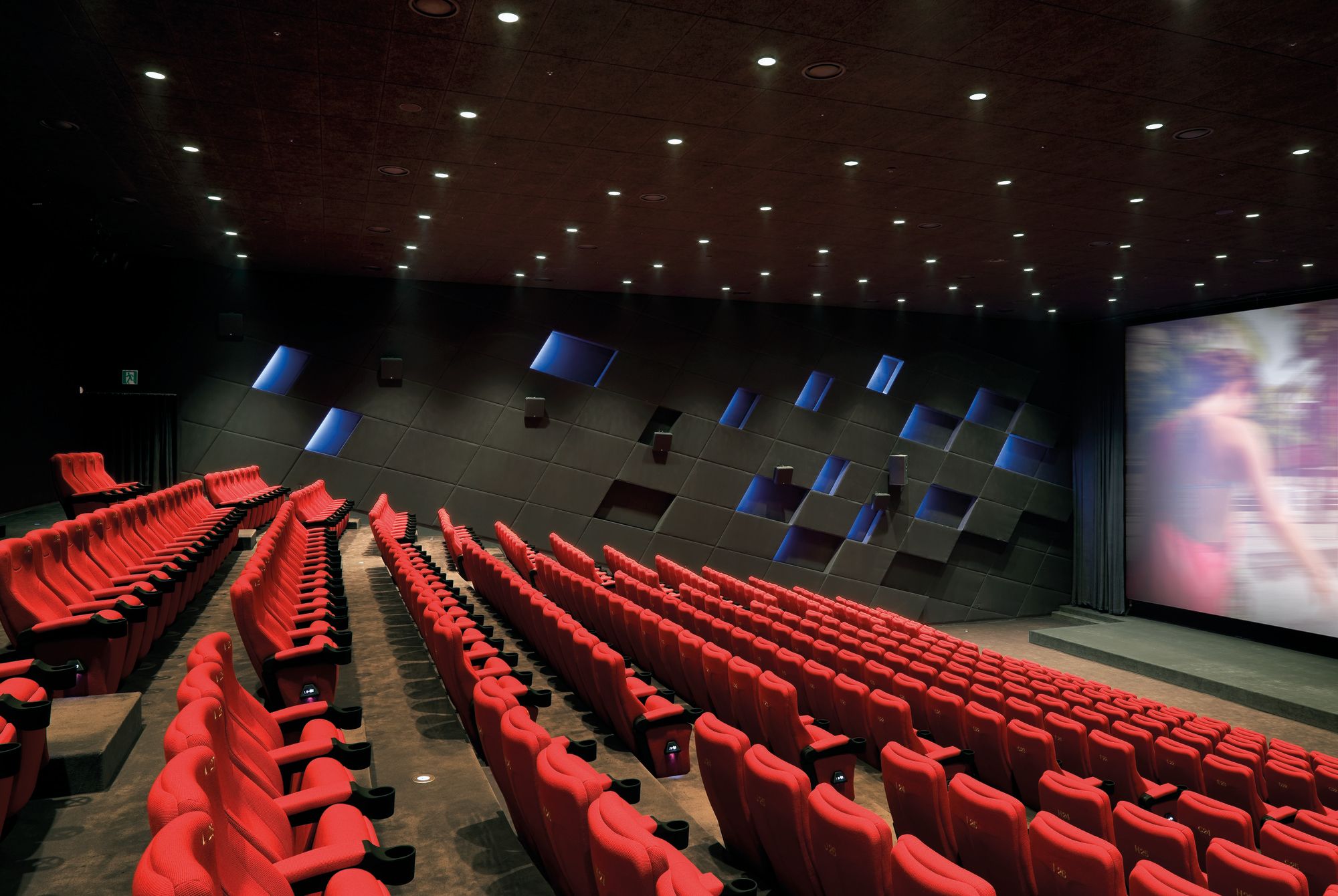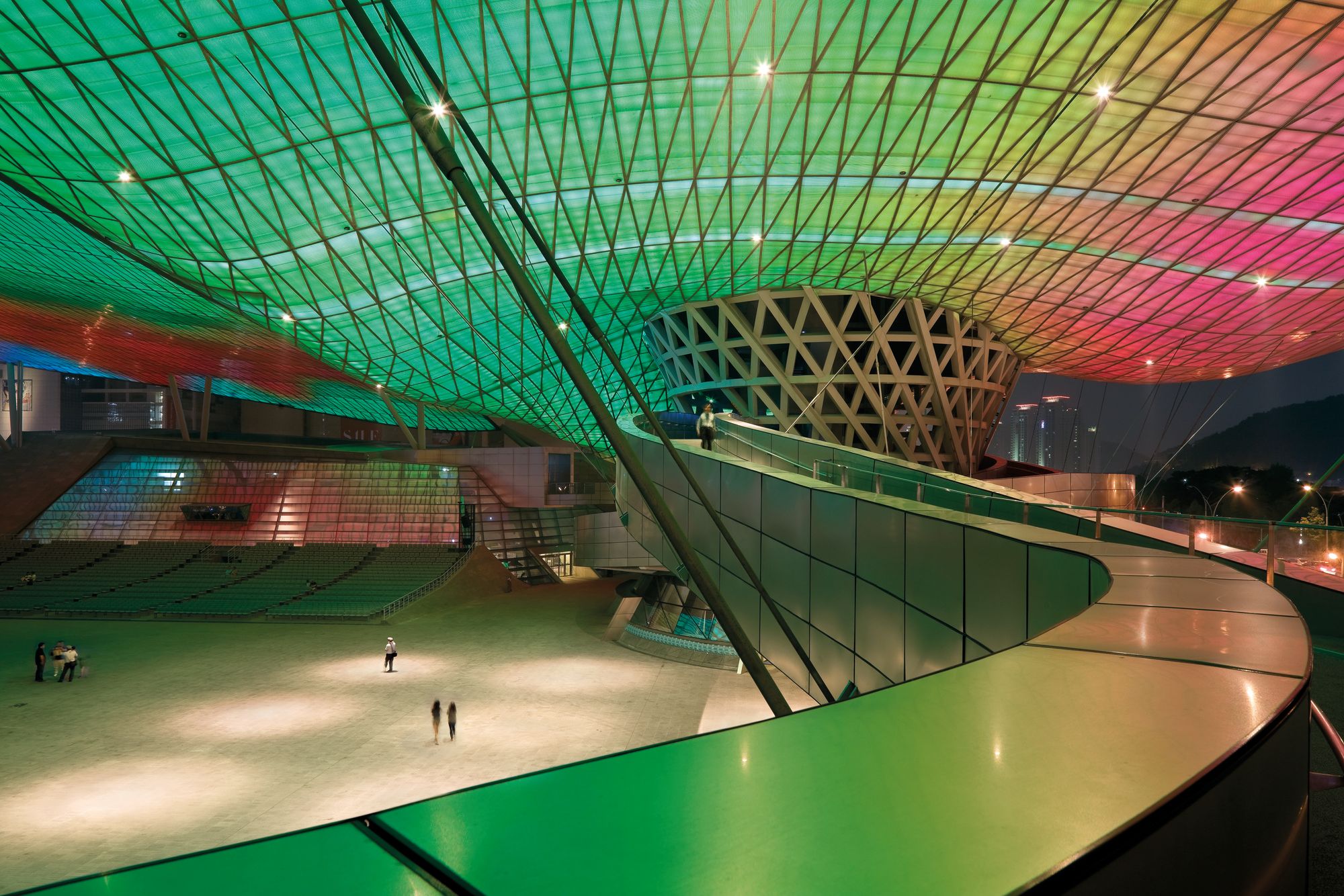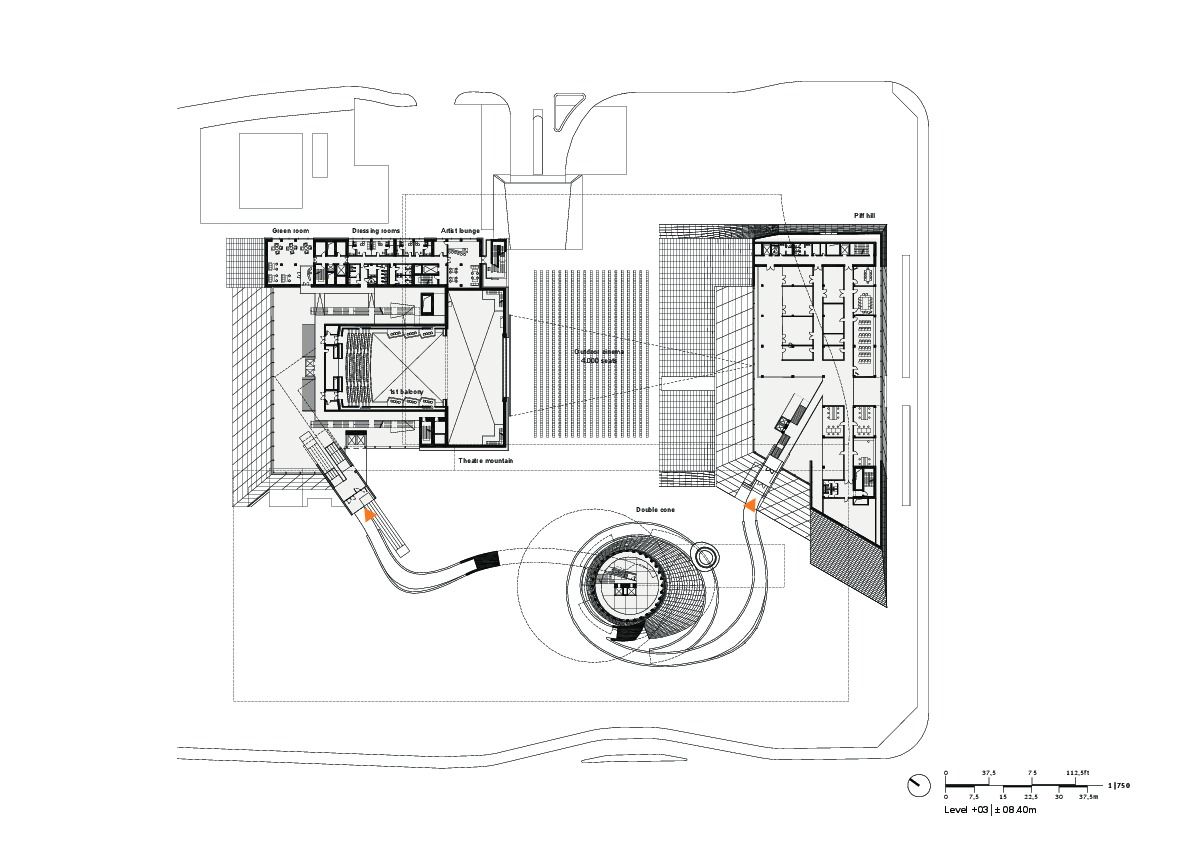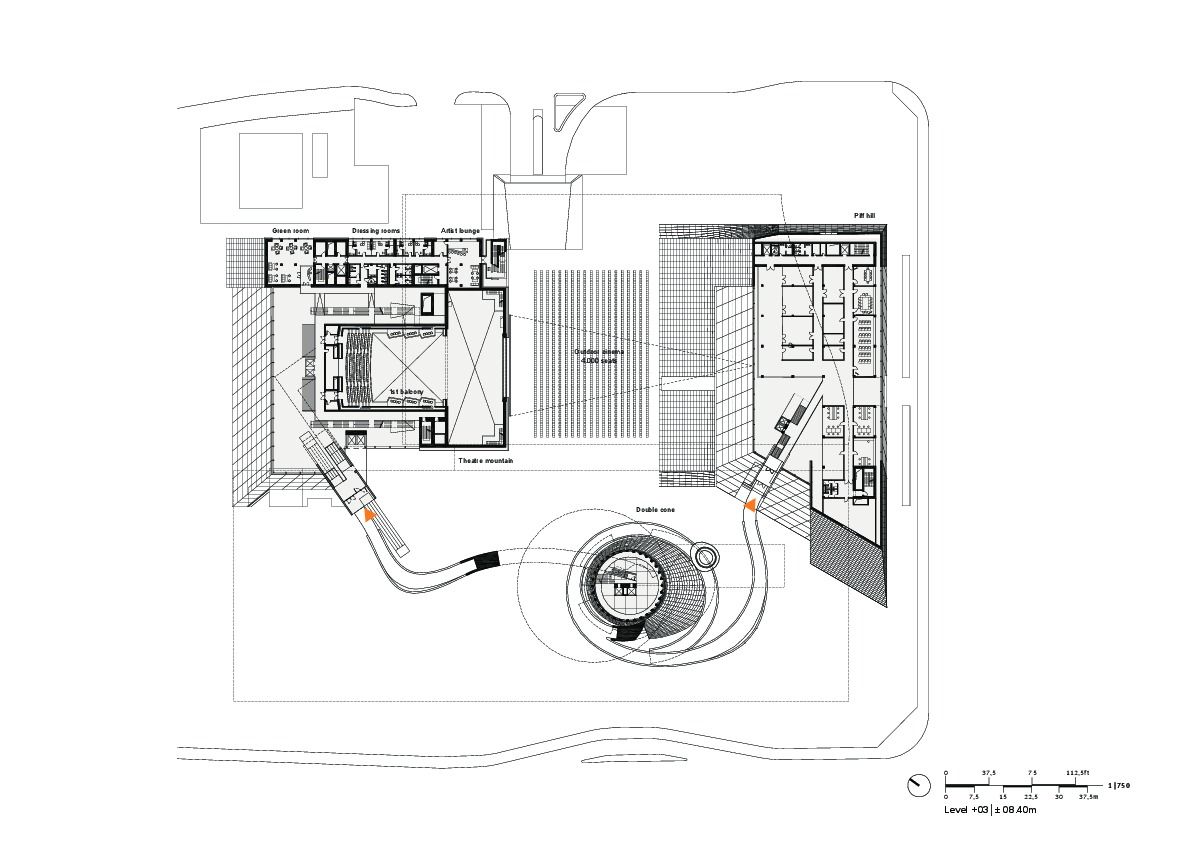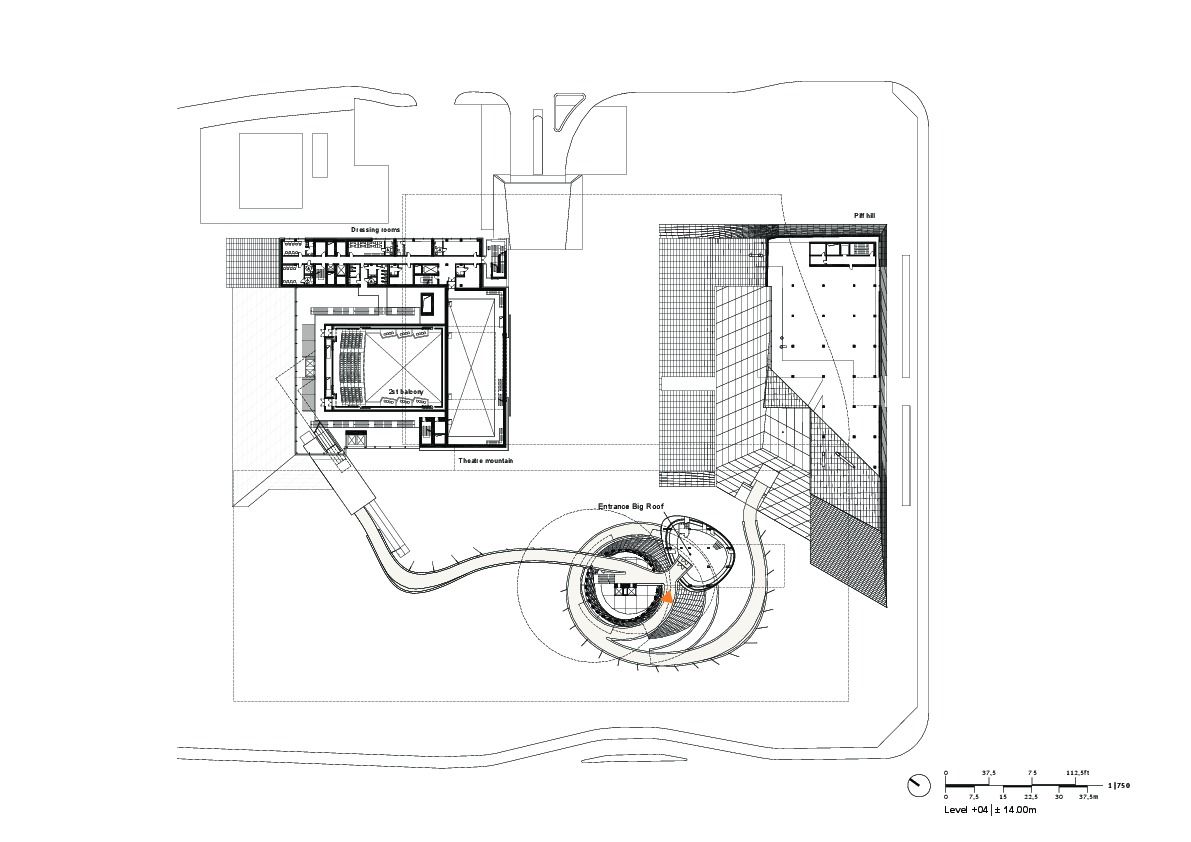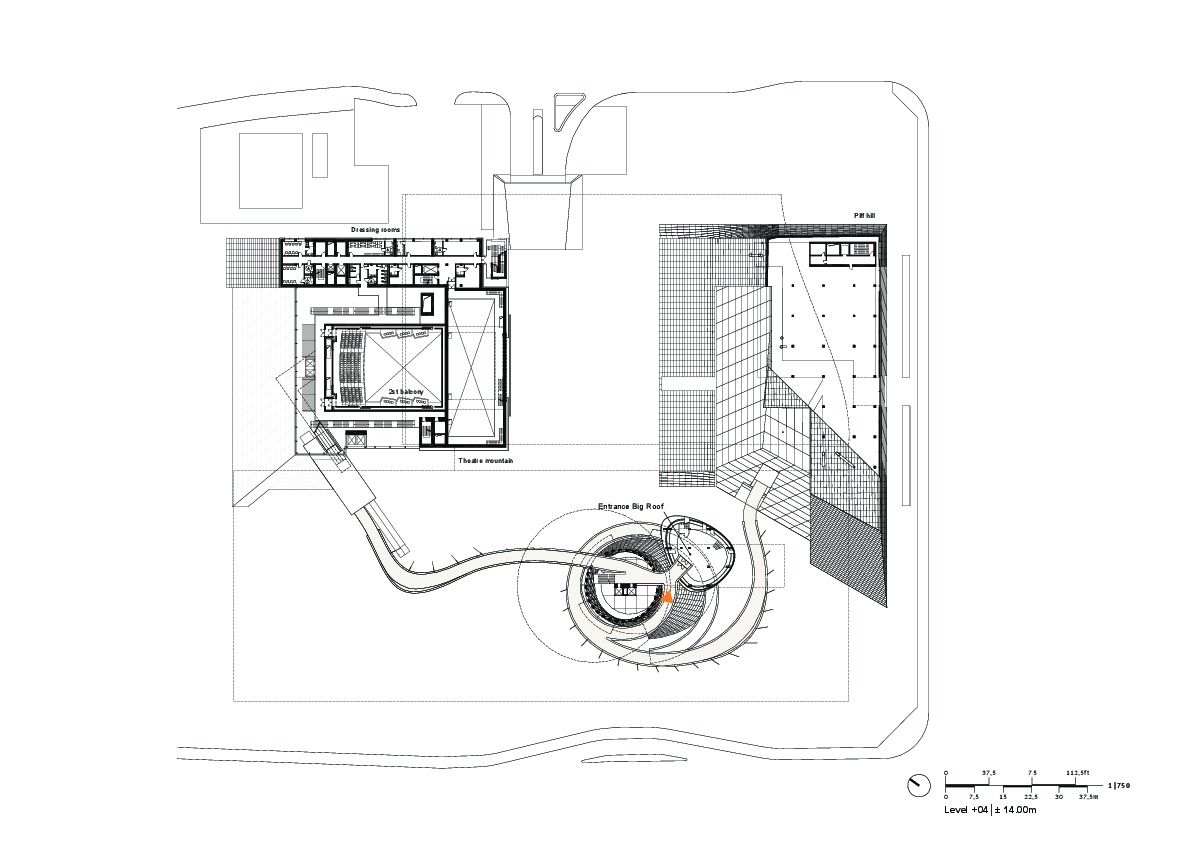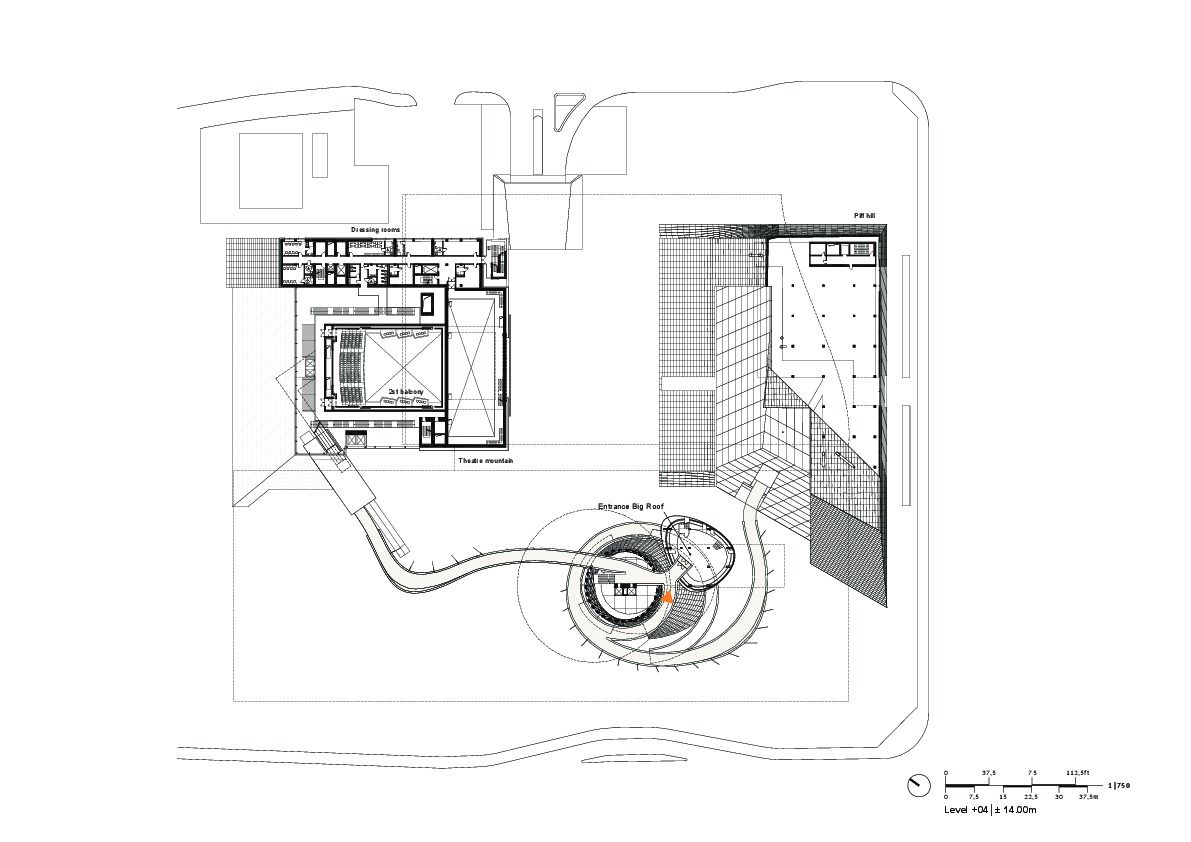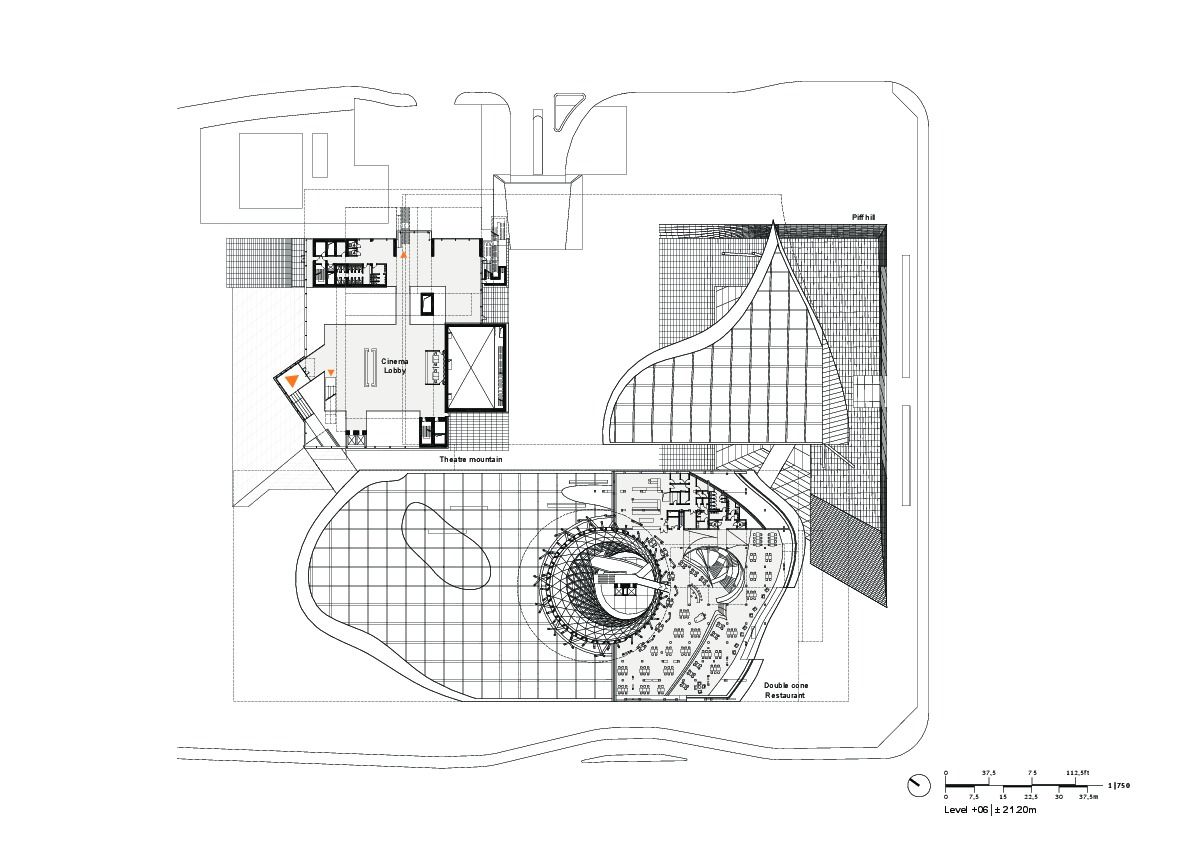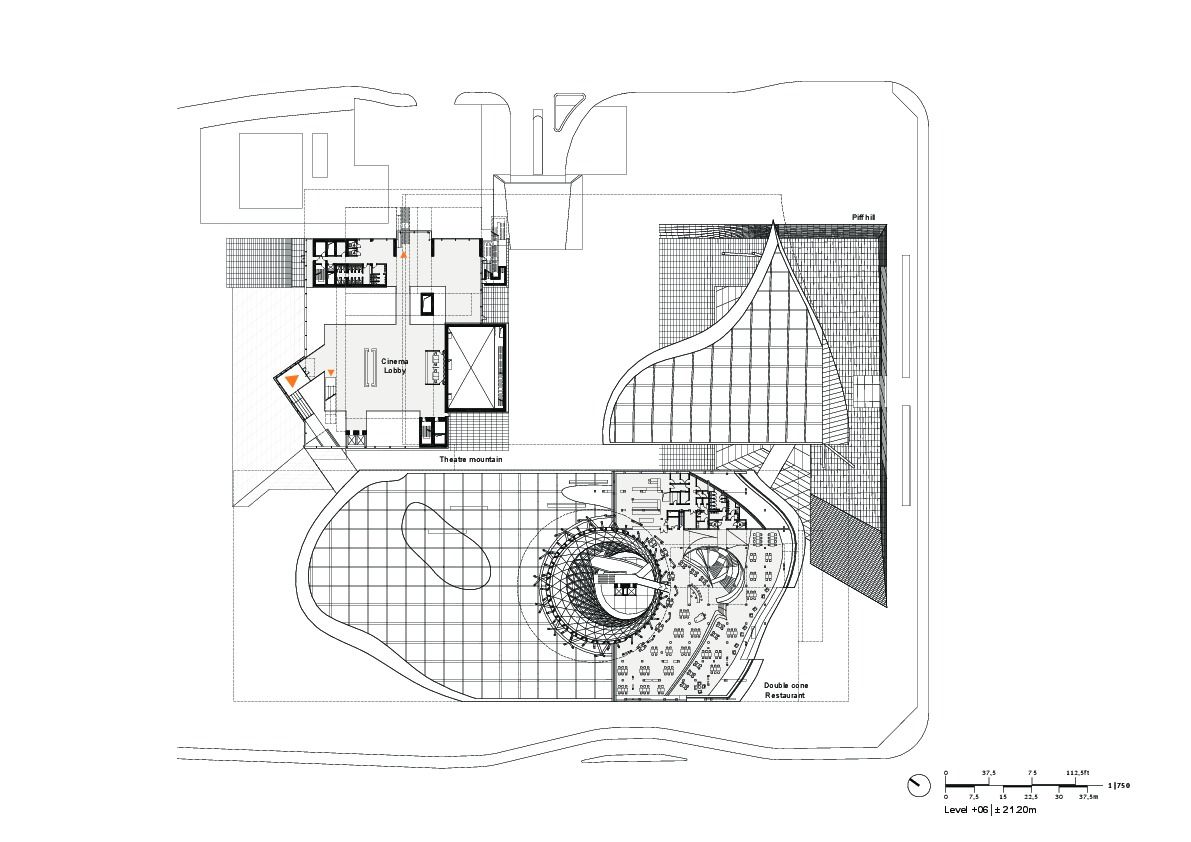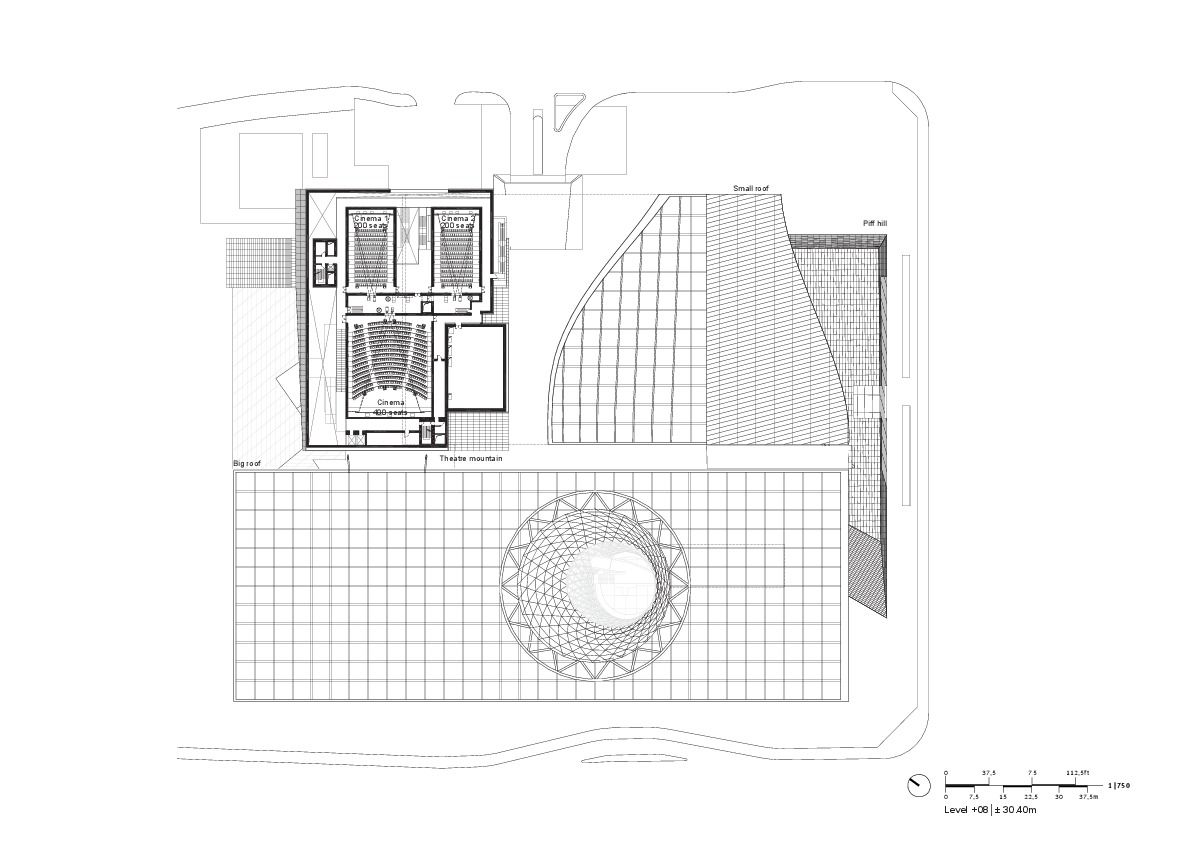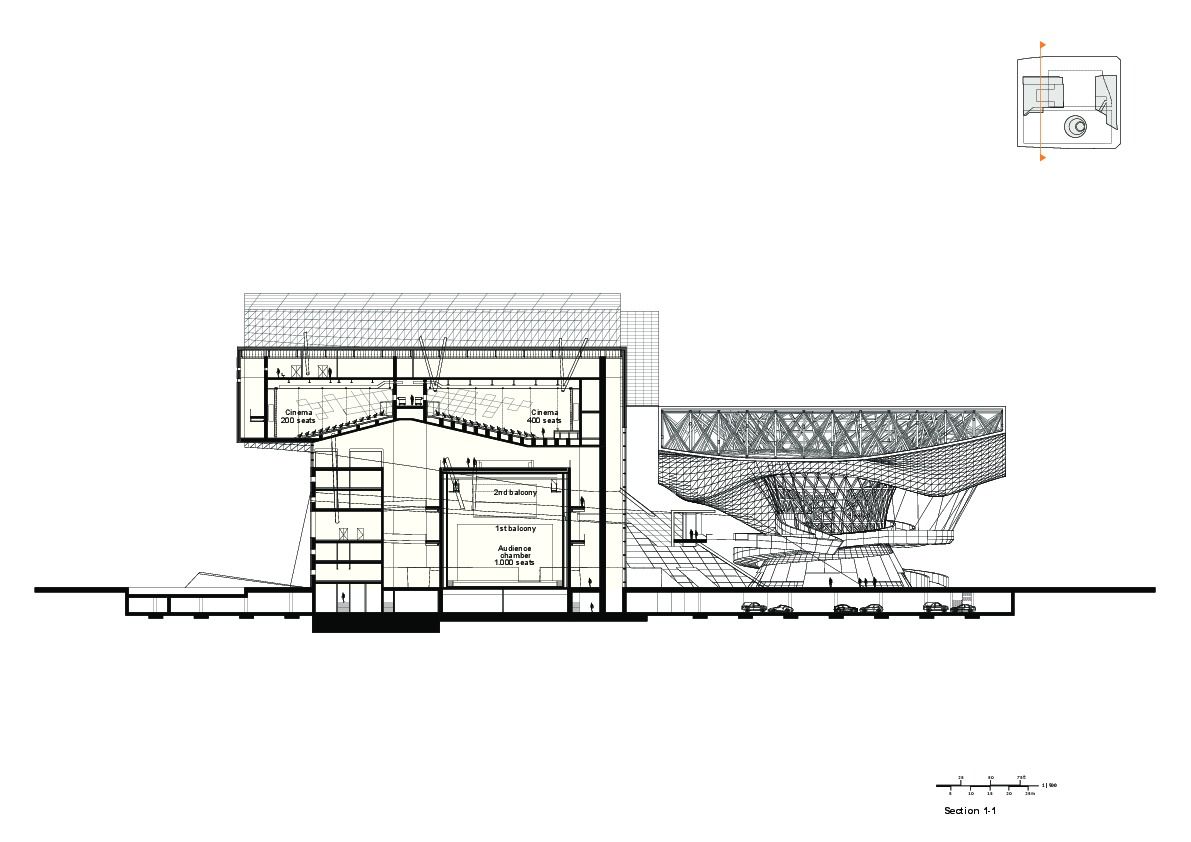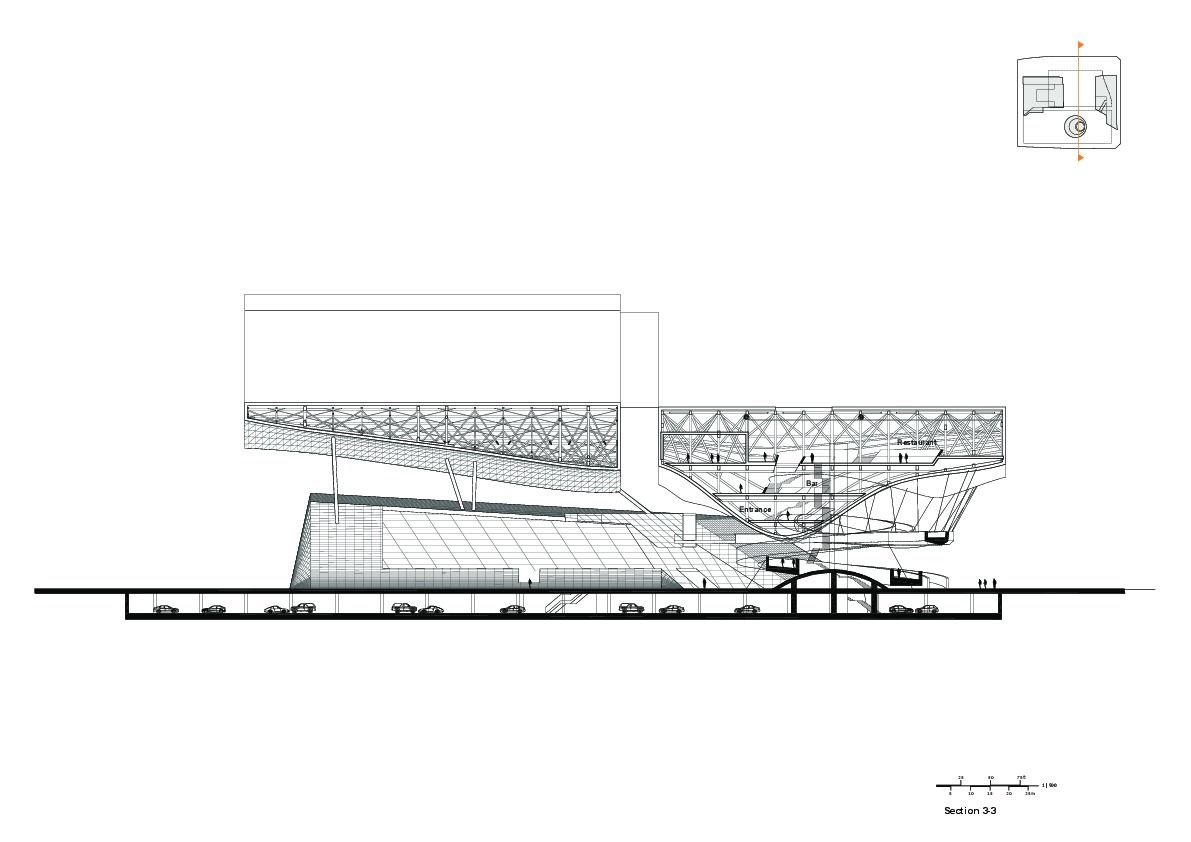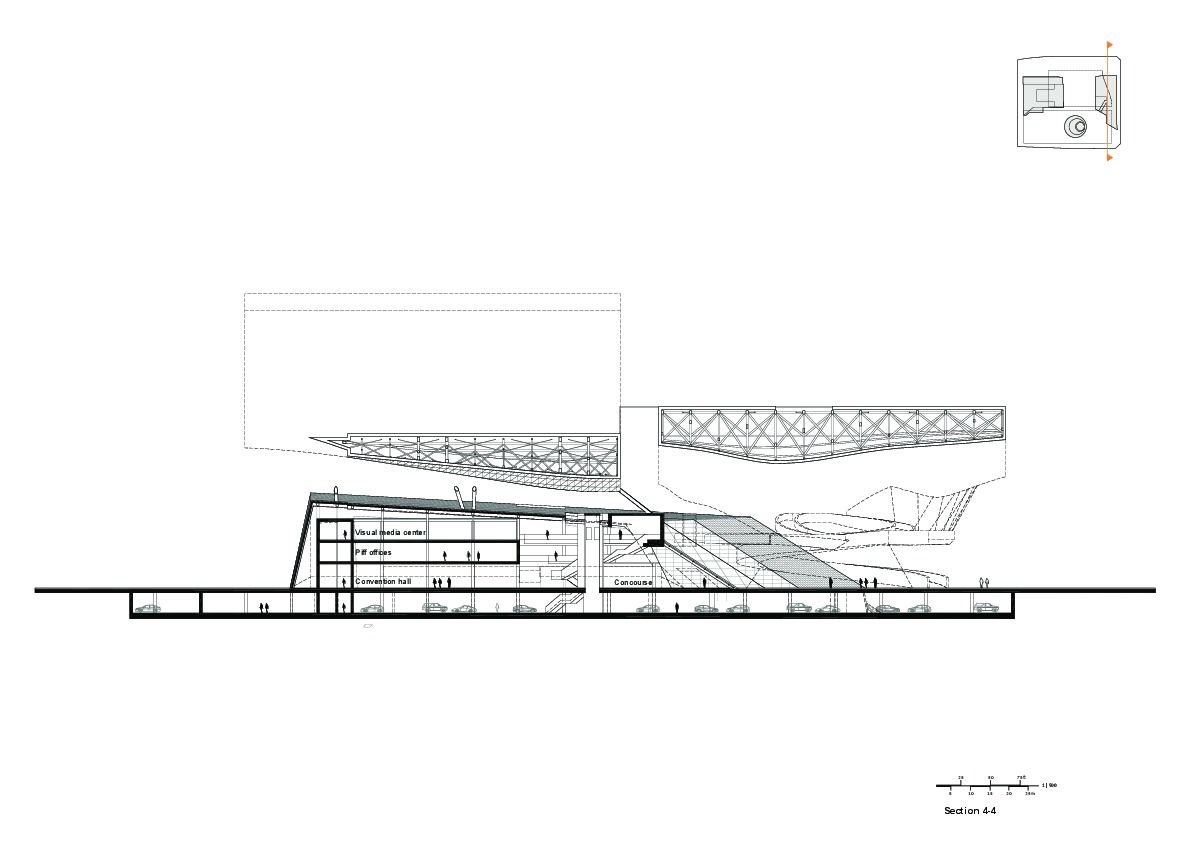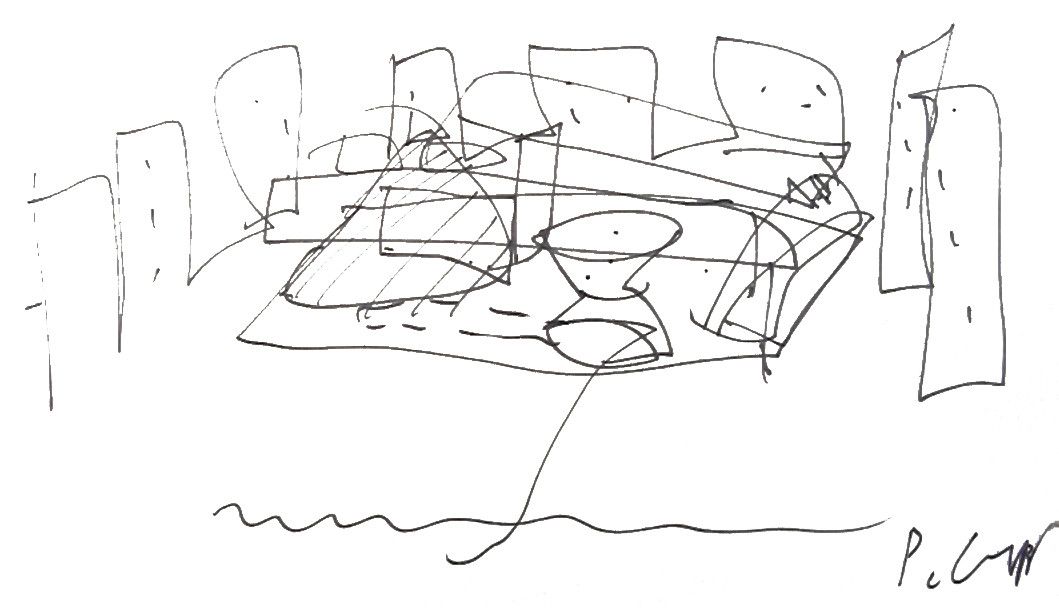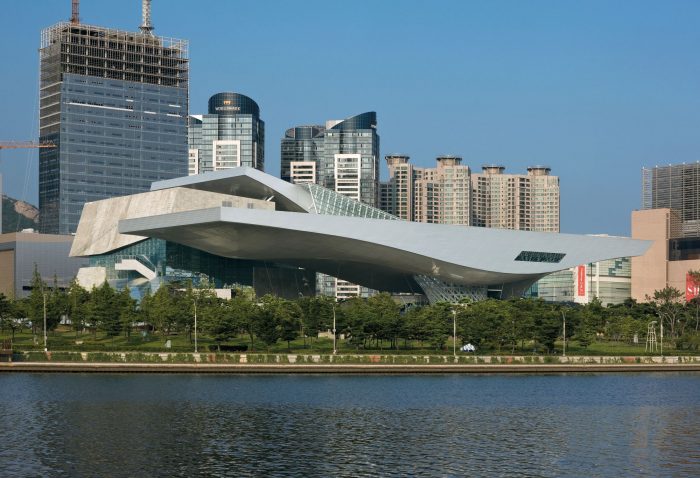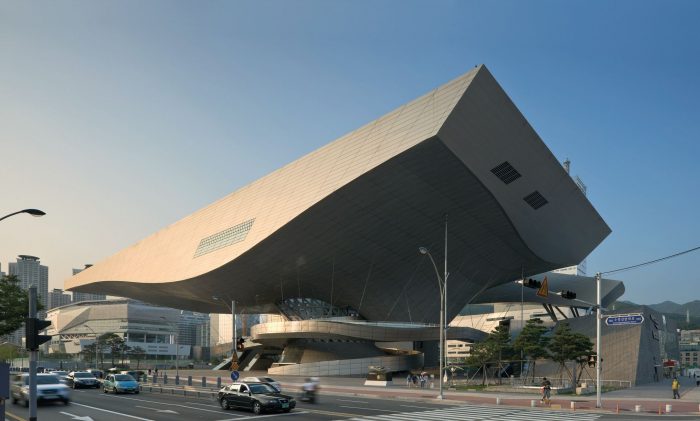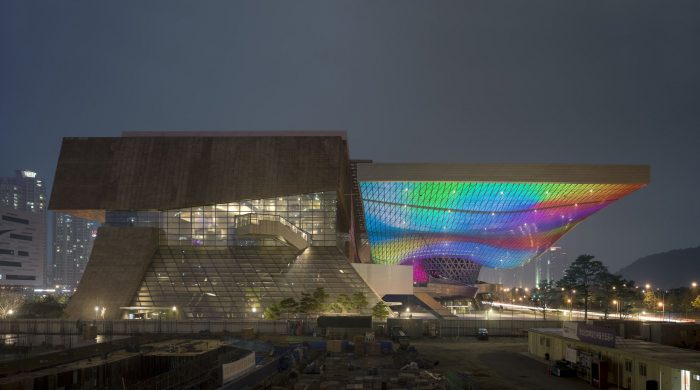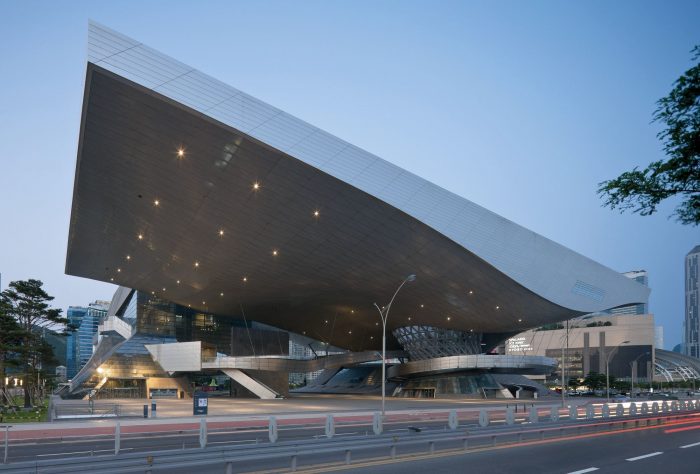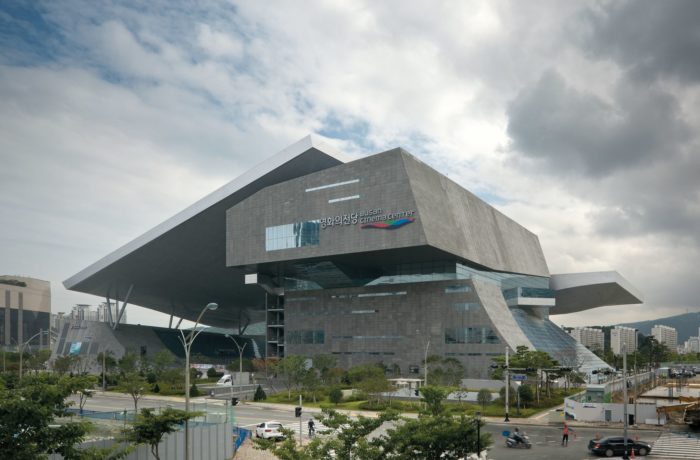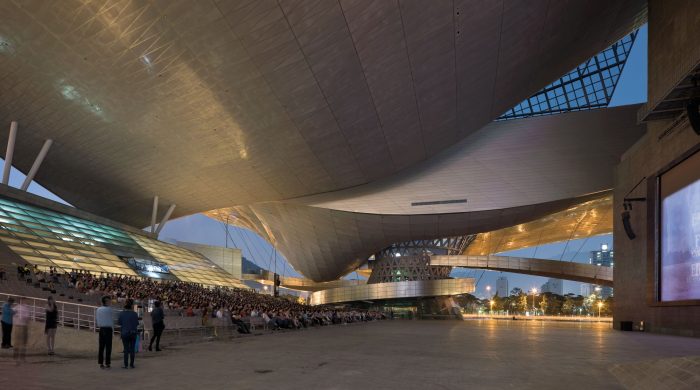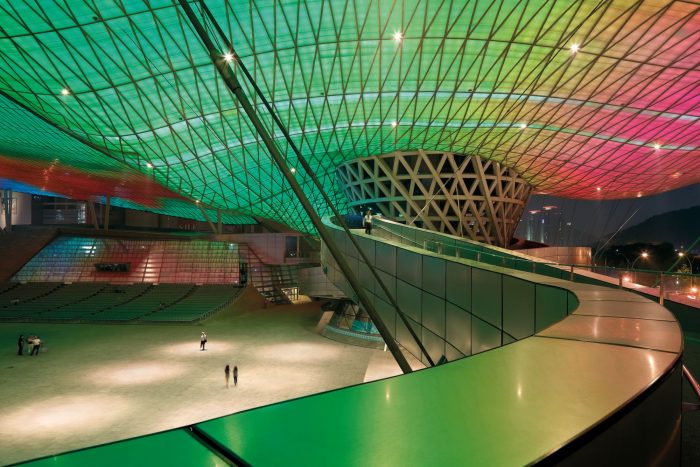COOP HIMMELB(L)AU’s design for the Busan Cinema Center and home of the Busan International Film Festival (BIFF) provides a new intersection between public space, cultural programs, entertainment, technology and architecture creating a vibrant landmark within the urban landscape. LED saturated outdoor roof elements acting as a virtual sky connect building-objects and plaza-zones into a continuous, multifunctional public urban space. Media, technology, entertainment and leisure are merged in an open-architecture of changeable and tailored event experiences. The result is a responsive and changing space of flows acting as an urban catalyst for cultural exchange and transformation.
The concept envisions an urban plaza of overlapping zones including an Urban Valley, a Red Carpet Zone, a Walk of Fame and the BIFF Canal Park. The urban plaza is formed by building and plaza elements sheltered by two large roofs that are enabled with computer programmed LED outdoor ceiling surfaces. The larger of the roofs includes a column-free cantilever of 85 meters over a multifunctional Memorial Court event plaza. The urban zones of the complex are formed by individual and recognizable building objects placed below the outdoor roofs. The building objects contain theater, indoor and outdoor cinemas, convention halls, office spaces, creative studios and dining areas in a mixture of sheltered and linked indoor and outdoor public spaces. The design of these spaces supports flexible, hybrid functionality that can be used both during the annual festival period and day-to-day use without interruption.
The urban zones defined by functional surfaces in plan are further articulated in a sectional dialogue between stone-clad “ground” forms of the Cinema Mountain and BIFF Hill, and the metal and LED clad “sky” elements of the roofs. The materiality of the building objects differentiates the spaces and articulates the architectural concept. Through their shape, placement and materiality, the various parts create a dynamic and informal tension between the ground and the roof.
The dynamic LED lighting surface covering the undulating ceilings of the outdoor roof canopies gives the Busan Cinema Center its symbolic and representative iconographic feature. Artistic lighting programs tailored to events of the BIFF or the Municipality of Busan can be created by visual artists and displayed across the ceiling in full motion graphics, creating a lively urban situation at night, but also visible during the day. Imbedded in the architecture the lighting surfaces serve as a communication platform for the content of the Busan Cinema Center. Light as art, which is at the very nature of cinema, creates a unique and memorable atmosphere for the public urban plaza and architecture of the BCC.”]
The Double Cone is the symbolic landmark entrance element to the Busan Cinema Center and serves as the connective element between the Cinema Mountain and the BIFF Hill. Designed as a steel web drum on top of a series of radial concrete fin walls, the Double Cone also is the only vertical structural support for the large cantilevered roof acting as a large, singular column. During day-to-day use, the ground level of the Double Cone contains a public café with outdoor seating, and the upper level links to a world-class restaurant, bar and lounge within the roof volume with views overlooking the APEC park and river beyond. During the festival the Double Cone marks the Red Carpet Zone and VIP entrance to the “Busan Cinema Center”, and can be used as a pre-event space for VIP’s on the ground level, or as a pre-staging area for transfer to the Red Carpet procession to the outdoor cinema stage, or to the upper levels of the Cinema Mountain or BIFF Hill foyers via the red carpet spiralling ramp and bridges suspended from the roof.
The Cinema Mountain is a multifunctional building containing both a 1,000 seat multifunctional theater with fly-tower and full backstage support, and a three-screen multiplex comprised of a 400-seat and two 200-seat Cinemas. Separate entrances and foyers are provided for theater and cinema respectively, however the foyers and circulation are designed so that they can be combined depending on operational preferences. Complete structural separation between the theater and the cinemas ensures optimal noise isolation for the theater space, which is designed as a first-class, flexible hall with seating on two levels and optimal sight lines and adjustable acoustics. A flexible proscenium type stage with side stages and fly-tower accommodates movable acoustical towers used to close down the stage volume for concerts and operatic theater, but can be easily moved for theater, musicals and other staged events. The stage includes a fore-stage lift that can provide additional seating, an orchestra pit or stage extension as preferred. Horizontally tracking curtains along the walls of the audience chamber can be hidden or deployed to adjust the acoustics of the space.”]
The Urban Valley combines a flexible flat ground surface and large stepped tribunes of the BIFF Hill as seating for a 4,000 seat Outdoor Cinema. The Valley is sheltered by a large sculpted outdoor roof with an LED ceiling surface and is oriented towards a flexible stage and screen area on the outside of the Eastern façade of the Cinema Mountain. Accommodation for purpose built projection screens, stages, loudspeaker and lighting arrays are provided allowing for exterior performances to share the interior theater’s backstage facilities.
The BIFF Hill is a ground surface formation creating the tribune seating space of the outdoor cinema and accommodating the concourse, the convention hall, the BIFF-center, the BIFF-offices and the visual media center. Given the flexible organization of the ground plan, it can be easily adapted to the different requirements during festival and day-to-day usage.
During the BIFF festival, or for other special events, the Red Carpet Zone is created by a special drop-off and media-event processional entrance at the Double Cone entrance element. A red carpet can be extended from the Double Cone event space and photo position to the south through the park and along a pier. VIP’s can enter from limousines along the street edge, or arrive by boat from the pier. Various options are provided for the red carpet circulation from the Double Cone to the different event and performance spaces depending on the scenario preferred, including a vibrant spiralling ramp from the staging level of the event space to the VIP restaurant lounge of the upper roof or to the BIFF Hill and Cinema Mountain on upper levels of the foyers. During non-event periods the Red Carpet Zone acts as the symbolic entryway into the Busan Cinema Center complex.
The Walk of Fame contains the Memorial Court as a public plaza. Our proposal is to imbed sources in the ground surface projecting holographic images of the stars, directors, producers and the like who have been made a part of the Walk of Fame. Their avatars inhabit the memorial court as permanent residents; however their programs can be changed to show variable aspects of information over time or in relation to specific BIFF- events. During non-event times the Memorial Court is used as a grand entryway to the Cinema Mountain and contains an outdoor dining area of the Double Cone Café overlooking the park and water beyond. Due to the column-free sheltered roof above, the public plaza of the Memorial Court is a multi-functional event space that can be utilized for BIFF- or Busan City- events without interrupting the day-to-day activities of the Busan Cinema Center, or simultaneously with other events in the additional spaces.
The BIFF Canal Park is proposed as an extension of the open network of public programs into the planned riverside park, and as a linking element between the river and the cinema complex. A new pedestrian footbridge is proposed to connect the Busan Cinema Center site with the park across the Boulevard to the South connecting the Double Cone with the APEC Park. An additional outdoor event ‘bowl’ is proposed surrounded by canals that can provide public and private boat access to the project site. Space for a future extension of the Busan Cinema Center project is proposed as an island among the canals, further integrating the cultural functions of the Busan Cinema Center project with the surrounding public space and landscape environment.
Courtesy of COOP HIMMELB(L)AU
